









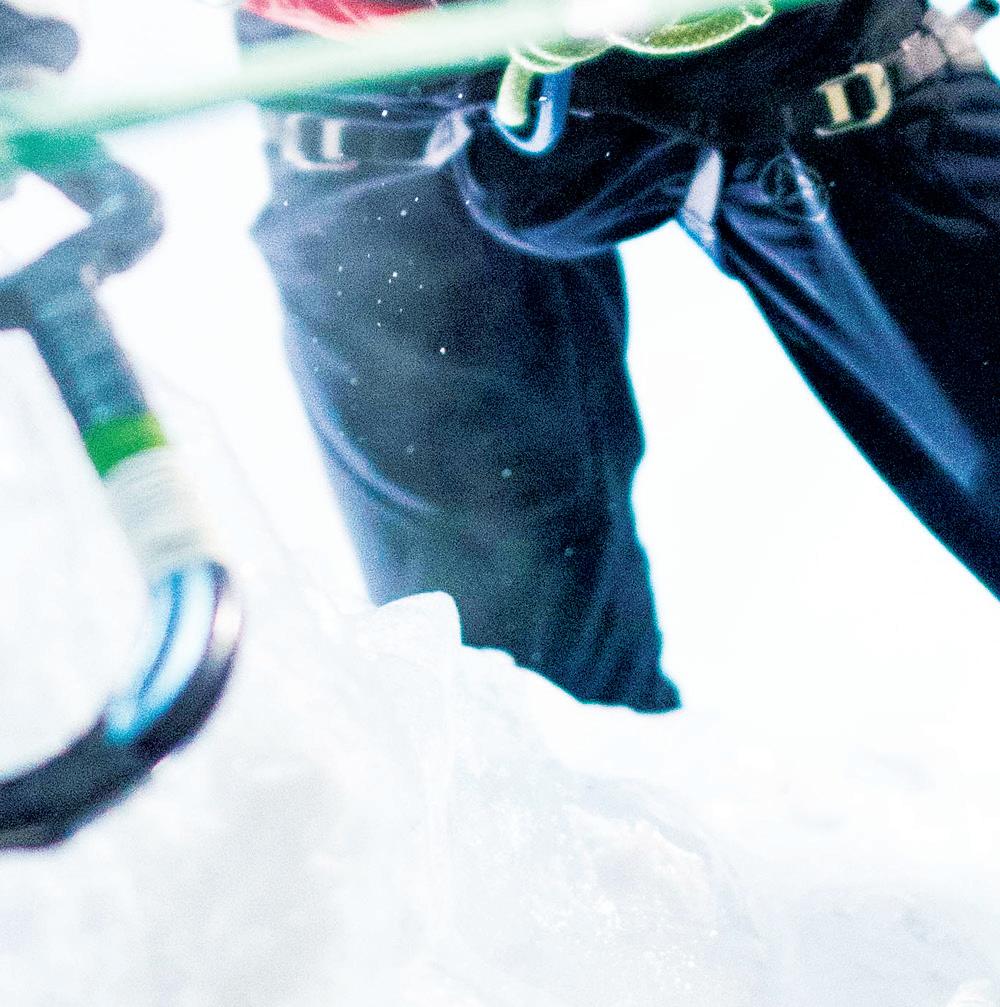



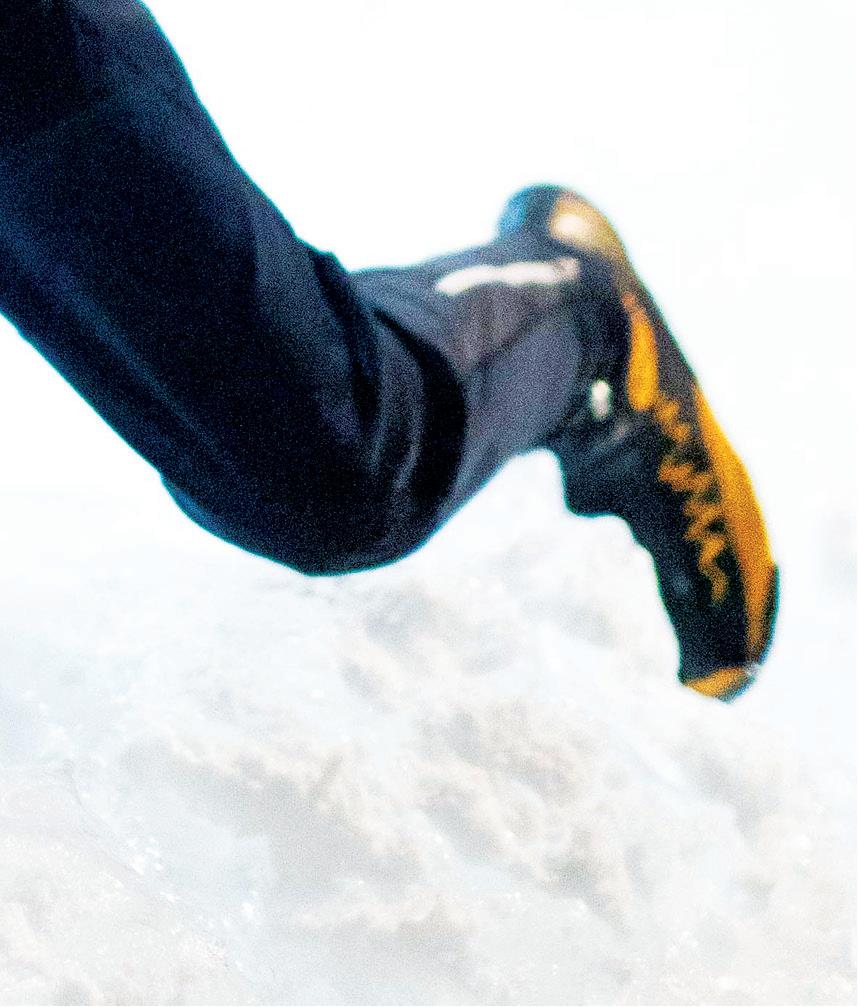










Explore our latest products for mountaineering
Drop by our store at 1130 Pearl Street for a coffee and learn about our latest premium outdoor products.
Welcome to nature

are required to file your Response to the Verified Motion to Intervene and Request for Allocation of Parental Responsibilities (hereinafter referred to as “Verified Motion”) and Petition for Allocation of Parental Responsibilities (hereinafter referred to as “Petition”), within 35 days after the service of this summons upon you.
Service of this summons shall be complete on the day of the last publication. A copy of the Verified Motion and Petition may be obtained from the clerk of the court.







Government and nonprofit resources are stretched too thin to meet growing need for help
BY MARC COWELL AND ELIZABETH CROWE
Families across Boulder County are facing a crisis. In a region known for opportunity, rising costs and shrinking resources are pushing our neighbors to the edge, testing the limits of our community’s safety net. Job losses, food insecurity and housing instability are the daily reality for many families in our community, and the systems in place to help them are under strain like never before.
Through the Family Resource Network (FRN), nonprofits, schools and government agencies work together to make Boulder County a place where all families can thrive. We are family resource centers, domestic violence agencies, childcare providers, community health centers and food pantries — all
providing essential services such as shelter, nutritious food, medical care and early childhood support.
Consider a family currently struggling to avoid eviction after losing a job and health insurance, followed by a hospital stay, childcare needs and a rent increase. Food banks and rental assistance funds helped for a while, but the family’s needs exceed the support available. Or consider a single mother who had to send her daughter to live with relatives after reaching the limit for emergency housing just so her child wouldn’t have to sleep in a car.
These stories are not isolated incidents but reflect a new normal; more people are experiencing need, and at a deeper level.
FEBRUARY 20, 2025 Volume 32, Number 27
PUBLISHER: Stewart Sallo
EDITORIAL
EDITOR-IN-CHIEF: Shay Castle
ARTS EDITOR: Jezy J. Gray
REPORTERS: Kaylee Harter, Tyler Hickman
CONTRIBUTING WRITERS: Rob Brezsny, Michael J. Casey, Marc Cowell, Elizabeth Crowe, Justin Criado, Paige Gross, John Lehndorff, Will Matuska, Dan Savage, Toni Tresca
COVER: John Jeanneret / UIAA
SALES AND MARKETING
DIRECTOR OF ADVERTISING: Kellie Robinson
SENIOR ACCOUNT EXECUTIVE: Matthew Fischer
ACCOUNT EXECUTIVES: Chris Allred, Austen Lopp
SPECIAL PROJECTS MANAGER: Carter Ferryman
PRODUCTION
CREATIVE DIRECTOR: Erik Wogen
GRAPHIC DESIGNER: Chris Sawyer
CIRCULATION
CIRCULATION MANAGER: Cal Winn
CIRCULATION TEAM: Sue Butcher, Ken Rott, Chris Bauer
BUSINESS OFFICE
BOOKKEEPER: Austen Lopp
FOUNDER / CEO: Stewart Sallo
As Boulder County’s only independently owned newspaper, Boulder Weekly is dedicated to illuminating truth, advancing justice and protecting the First Amendment through ethical, no-holds-barred journalism and thought-provoking opinion writing. Free every Thursday since 1993, the Weekly also offers the county’s most comprehensive arts and entertainment coverage. Read the print version, or visit boulderweekly.com. Boulder Weekly does not accept unsolicited editorial submissions. If you’re interested in writing for the paper, please send queries to: editorial@ boulderweekly.com. Any materials sent to Boulder Weekly become the property of the newspaper. 1495 Canyon Boulevard, Suite CO 1, Boulder, CO 80302
Phone: 303.494.5511, FAX: 303.494.2585 editorial@boulderweekly.com boulderweekly.com
Boulder Weekly is published every Thursday. No portion may be reproduced in any form without written permission from the publisher. ©2025 Boulder Weekly, Inc., all rights reserved.
Boulder Weekly welcomes your correspondence via email (letters@boulderweekly.com). Preference will be given to short letters (under 300 words) that deal with recent stories or local issues, and letters may be edited for style, length and libel. Letters should include your name, address and telephone number for verification. We do not publish anonymous letters or those signed with pseudonyms. Letters become the property of Boulder Weekly and will be published on our website.
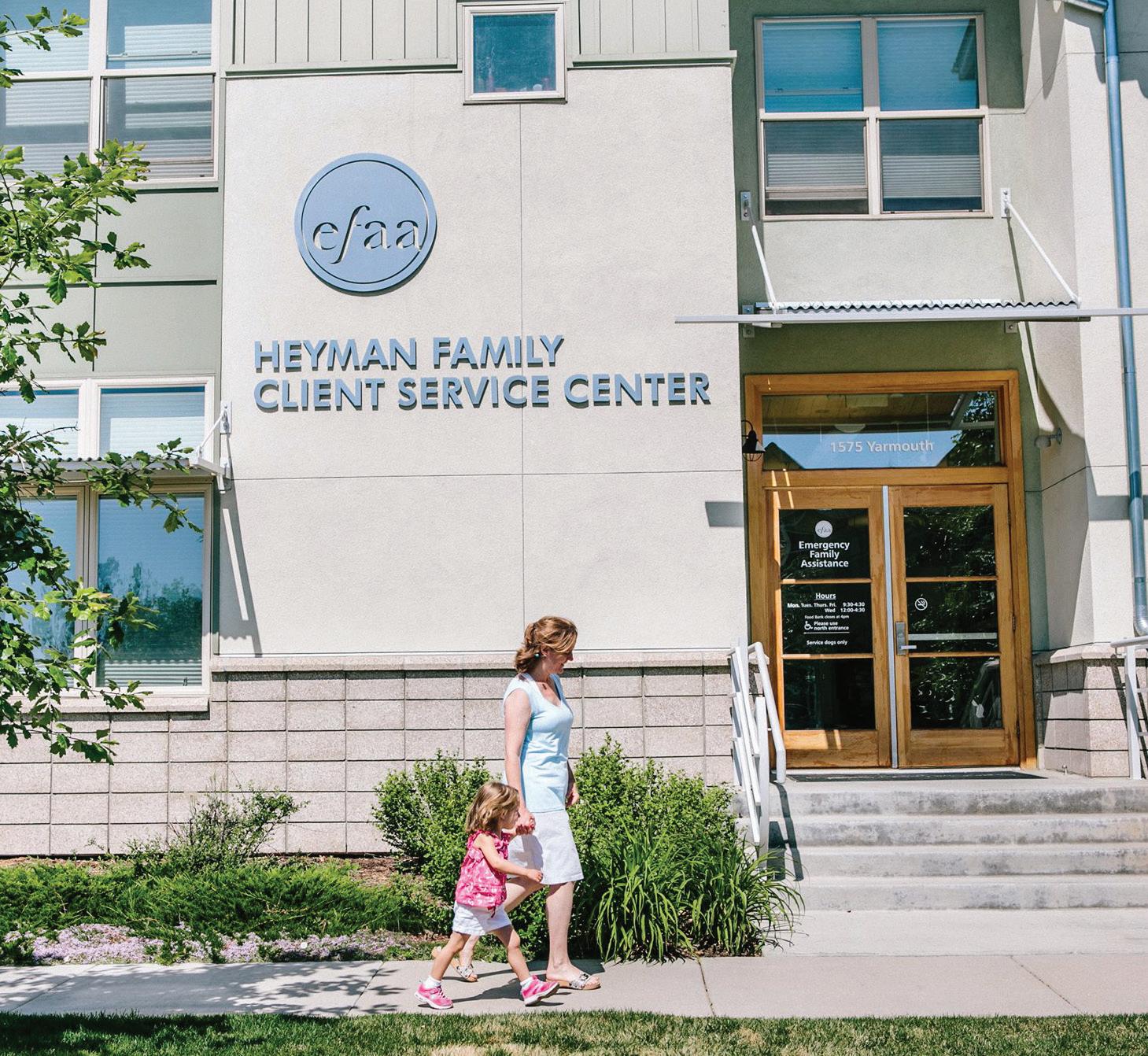
Some of these challenges are the result of higher rents and the impact of inflation on household goods that make it harder for families to be financially self-sufficient. Compounding the problem are changes in how state and federal food, health care and child care systems are funded.
This, coupled with the end of COVID19 assistance programs, means government and nonprofit agencies don’t have the ability to help everyone in need and can’t help for as long as people need to become financially stable. Local nonprofits are stretched thin, and resources have become critically low, even as the demand for services continues to grow.
In fall 2024, FRN members urged the community to take action. That call is just as urgent today. We’re committed to doing all we can with the resources that we have available to create a stronger and more resilient community. But we can’t do this alone.
Boulder County has always been a community that steps up when it matters most, and as we start 2025 the need is more urgent than ever. Here are a few impactful ways to help ensure agencies that provide basic needs assistance (such as food, shel-
Let me start by saying I thoroughly enjoy dining out. One thing that replenishes my soul is sitting at a busy bar with my husband on a Friday night. We love the camaraderie that often occurs when chatting with a bartender. They usually make excellent recommendations and keep our glasses full, allowing us to relax and reconnect, which can have the power to remind us why we love each other. Pretty amazing what can happen just because someone else did the cooking.
But that’s just it: It’s the energy, the care, the connection, the experience — not just the food that makes dining out so dear to us. I appreciate a high vibe experience, and I fully support any and all efforts to keep local food institutions alive. What I don’t understand is why the heck we have selected only restaurants to be the poster children of pandemic business loss.
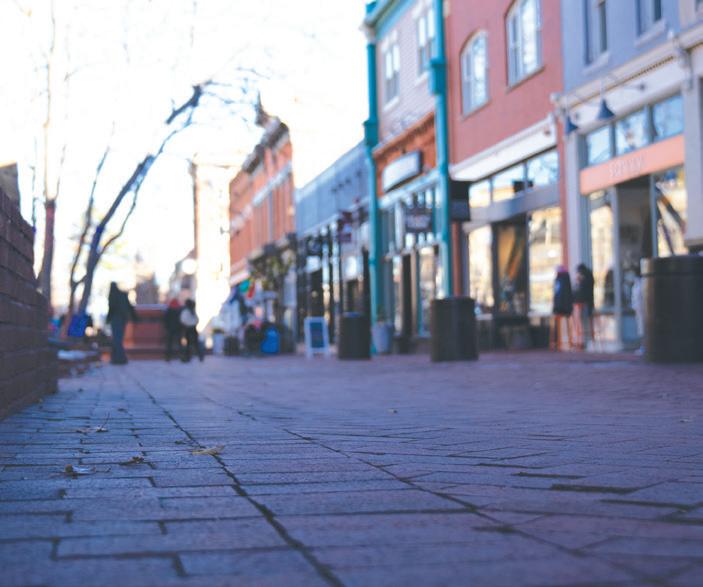
ter, health care and child care) can continue to serve our community:
• Give financially: Every dollar helps ensure the existence of essential programs that give people hope and a foothold during tough times.
• Volunteer: Many organizations need help sorting food donations and materials or providing other support. Even a few hours can make a difference.
• Advocate and engage: Support policies that reduce financial burdens, improve access to health care and boost housing stability.
In a time of growing need, let’s ensure Boulder County is a place where families are supported in their most critical moments, and where we continue to unite for transformative, lasting positive impacts for everyone who calls our communities home.
Learn more about the Family Resource Network at boco.org/FRN.
Marc Cowell is chair of the Family Resource Network and executive director of Longmont nonprofit OUR Center. Elizabeth Crowe is vice chair of the Family Resource Network and deputy director of the City of Boulder’s housing and human services department.
Off the top of my head, Blo Blow Dry Bar at 1600 Pearl St. has closed. So has 1313 A Salon at 1313 Spruce. Dragontree Spa left 1521 Pearl St. and dramatically downsized its business, which is now located at 2405 Broadway. The service industry, beyond restaurants, is certainly being impacted by the same hardships, just with less publicity.
I hesitate to write this, because victimhood is not a position that keeps anyone in business, but since the squeaky wheel apparently gets the grease, here I am to squeak for the entire in-person experience industry. Extreme inflation, rising labor cost, economic uncertainty and brutally cold temperatures keep patrons away or spending less at all servicebased businesses, not only restaurants.
Personal services (salons, spas, tattoo shops, etc.), bowling alleys and concert

venues were some of the most heavily regulated and restricted sectors throughout the pandemic. These local, neighborhood businesses were ordered to close, without any equivalent of take-out, and remained at reduced capacity even after restaurants went back to 100% occupancy. Yet no targeted support programs such as the Restaurant Revitalization Fund were offered to other brick-andmortar service businesses.
Additionally, restaurants have benefited from the 45B FICA tax tip credit, allowing them to claim a dollar-for-dollar tax tip credit on the employer portion of FICA taxes since 1993. Despite most service businesses in the United States relying on tipping, this tax credit is only available for businesses in the food and beverage industries.
So I am asking you, Boulder Weekly, to take an eagle’s eye view in your reporting. Narrowly focused favoritism in government and media contributes to divisiveness in our communities and our nation.
This is a kind request to widen perspectives and be more inclusive across the board.
– Perrin Chipouras, owner, Orange Poppy Spa
Elon Musk’s minions — his mini-me wannabes — running rampant through the offices of government in Washington are emblematic of the failure of American culture to nurture healthy, empathetic, young and old male psyches.
True power comes with finding one’s inner character; not lording over, nor from mimicking others.
Calling them “Muskrats” defames a humble, truly American aquatic rodent. Apologies are due.
– Bob Porath, Boulder

What your local officials are up to this week
BY BOULDER WEEKLY STAFF
On Feb. 20, the Boulder County commissioners will:
• Hold a town hall from 5:30-7 p.m. at Lyons Town Hall, 432 5th Ave. Wildfire Mitigation Manager Jim Webster will discuss the county’s efforts, after which attendees can ask questions. Refreshments will be provided.
On Feb. 25, the county’s public works department will:
• Host a public meeting to provide an update on a feasibility study for a proposed compost facility. County commissioners, county consultants and officials from Boulder-based nonprofit Eco-Cycle, which operates the Boulder County Recycling Center, will also be in attendance.
Last month, Longmont City Council agreed to move forward with an intracity land swap, freeing up property that could eventually become home to a composting facility, a move Boulder County praised with a public press release.
The feasibility study is expected to wrap up in the second quarter of this year. A presentation from the meeting will be available posted on the project website: boco.org/compost-facility.
The meeting will be held from 5:30-7 p.m. at Boulder County Recycling Center, 1901 63rd St. in Boulder.
On Feb. 18, the council interviewed three finalists for municipal judge and entered executive session to discuss contract negotiations. The presiding municipal judge Teresa Ablao is retiring in March.
Council will vote to appoint a new judge at the March 25 meeting, communications specialist Gabi Rae wrote in response to emailed questions.
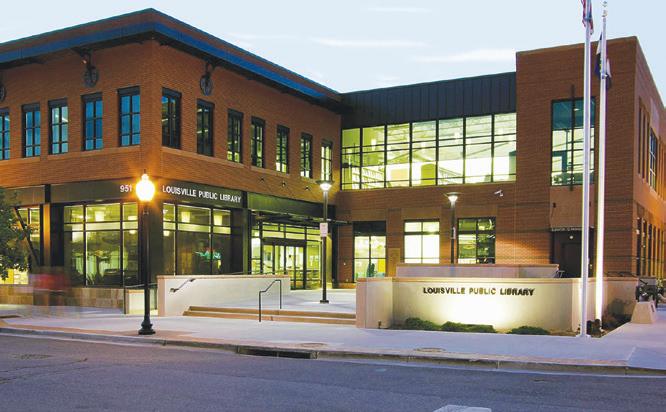
On Feb. 18, council:
• Awarded a $317,788 contract to Niwot-based Blue Spruce Construction Services for interior renovations of the library, including new carpet, paint, furniture, fixtures and equipment and disability access to the first-floor restrooms.
The original approved budget for the project was $241,240, but all the bids received during a competitive process exceeded that amount. The overrun will be paid for from the Capital Improvement Fund and the Library Impact Fee fund.
Work will begin in April. The library will be closed for 3-4 weeks. Limited services — including holds, pickups and browsing of new materials — will be provided in the lobby, according to staff. Story times may also be scheduled outside, weather permitting.
• Met in executive session to discuss undisclosed pending litigation related to a city contract. No report was given to the public following the closed-door meeting.
On Feb. 18, council:
• Decided the Tebo property, located at the southwest corner of U.S. 287 and Arapahoe Road, is eligible to be annexed into city limits. Before a final vote on the annexation, staff, planning commission and council will review plans for 465 residential units and 160,000 square feet of retail space, including a big box store. Public hearings will be part of those reviews.
• Adopted the Downtown Development Plan.
• Received an update on a rewrite of the city’s development codes, written in the 1980s, to align them with existing city plans.
The first section to be rewritten concerns new zoning districts and uses within the zones. Public engagement is expected to begin soon, with the city collecting input on allowing duplexes and townhomes on corner lots and collector streets in existing neighborhoods to create “soft density,” allowing neighborhood coffee shops or small retail stores in converted houses and expanding live/work opportunities.
View the section at bit.ly/ LafayetteCodes1BW.
On Feb. 27, the council will hold its midterm check-in.
Council set 11 priorities for the 202425 term. Just one has been completed (a pay increase for council members), according to an online progress tracker created by the city, though two other projects are more than 90% finished. Only half of the priorities are on track to be complete before the end of council terms for Matt Benjamin, Lauren Folkerts, Mark Wallach and Nicole Speer later this year. It is not uncommon for councils to leave the majority of their work unfinished, with many projects spanning multiple years.
View the priorities and progress: bouldercolorado.gov/city-council-priorities. The meeting is scheduled to last five hours.

On Feb. 25, the Town of Superior will host its CAPS Speaker Series. Wall to Wall: Building Community through Murals will feature Max Kauffman and Anthony Garcia.
The discussion begins at 6:30 p.m. at Superior Community Center, 1500 Coalton Road.
All agenda items are subject to change. Karen Norback contributed reporting.
Your local news at a glance
BY KAYLEE HARTER

The King Soopers strike, which included Boulder and Louisville stores, ended late Monday, Feb. 17 with an agreement to return to the bargaining table with “a 100-day period of labor peace, ensuring negotiations continue in good faith without further disruptions.” No new contract is in place yet.
The strike ended two days ahead of its planned Thursday, Feb. 20 end date. Workers from 77 stores across the Front Range were on strike over what they say were unfair labor practices (ULP) including interrogating and surveilling union members and “refusing to provide information necessary for the union to be able to make or consider proposals in contract negotiations.”
The agreement ensures that workers will not lose their health insurance for not meeting hourly requirements due to the strike, according to releases from both parties.
The return to work comes after nearly two weeks of a contentious strike, including legal action from the company, a federal suit and a request for a temporary restraining order on picketers that a Denver district court judge largely rejected.
Among the denied requests was to limit the number of picketers to six outside a store at a time, CPR reported. Still, the judge ruled that picketers could not block delivery trucks or put up temporary structures.
The chain said stores returned to normal hours and operation Feb. 19.
A federal magistrate judge recommended Monday that Lisa Sweeney-Miran’s lawsuit against the City of Boulder should go forward, after the city filed a motion to dismiss the suit in March 2024.
Both parties have 14 days to file objections, and then the magistrate’s recommendation will go to a district court judge for a final decision.
Sweeney-Miran alleged in her January 2024 suit that the city violated her First Amendment rights and right to due process when city council voted 5-2 to remove her from the city’s Police Oversight Panel (POP) in May 2023. Sweeney-Miran was removed over allegations that she was biased against police, stemming from tweets criticizing policing as well as her involvement in a lawsuit challenging the city’s camping ban that allows police to ticket people for sleeping outside.
Sweeney-Miran also alleged in her suit that the city coerced her to withdraw from the lawsuit ahead of her 2022 appointment to the POP.
Members of the volunteer cop watchdog group receive a $200 per month stipend, which the city argued in its motion to dismiss effectively made her a public employee and therefore limited free speech rights, according to the recommendation. The city also contended that she withdrew from the camping ban lawsuit voluntarily.
The magistrate, Susan Prose, disagreed with the city that SweeneyMiran’s claims over retaliation should be dismissed, saying it was premature to decide whether Sweeney-Miran should be treated as a public employee with regard to free speech. Prose also recommended against dismissing the claim that Sweeney-Miran was denied due process.
However, the claim that the city unconstitutionally coerced SweeneyMiran into withdrawing from the camping ban lawsuit should be dismissed, the magistrate said in the filing.
“Overall, I think we’re happy with the ruling on the motion to dismiss because it preserved most of our claim,” Ashlyn Hare, one of the attorneys representing Sweeney-Miran said. “We are currently
debating whether we want to file an objection on that one claim where the motion to dismiss was granted, which is our coercion claim ... We’ll continue conferring with our client to decide.”
A spokesperson for the city said the city would not discuss litigation strategy publicly. “We will let any filings we make in this ongoing case speak for themselves,” they wrote in an email.
CU Boulder has selected Andrew Mayock to be the university’s first vice chancellor for sustainability.
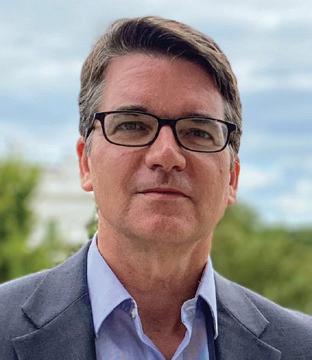
Mayock previously served in the Biden administration as the chief sustainability officer, leading the federal government’s climate and sustainability initiatives. In the new role, Mayock will drive the university’s climate goals, work with local communities “to make Colorado the most sustainable state in the U.S.” and fund sustainability initiatives.
Mayock will be paid $360,000 annually and will take the role March 10, ahead of the university’s annual Climate Sustainability Summit in late April.
It’s not clear if the current presidential administration’s stance on climate change and orders targeting environmental justice programs could have an impact on the position or the university’s funding.
“We don’t find it helpful to speculate about possible decisions by the federal government,” university spokesperson Deborah Méndez-Wilson wrote in an email. “We are tracking executive orders and other federal decisions and assessing what impacts, if any, they might have on our campus. If something were to impact our campus community directly, we would share that information with our students, staff and faculty as soon as possible.
“What we can tell you is that CU Boulder is a leader in sustainability, and our focus as a flagship institution and a top public research university is to ensure that our work benefits the people of Colorado and the rest of the country.”







BY PAIGE GROSS, STATES NEWSROOM
Afatal shooting at Antioch High School in Nashville in January had an unusual feature: The school had contracted an AI gun detection company to help identify and stop shootings, but the system did not spot the gun before a student opened fire.
The Metro Nashville Public Schools board had approved a $1 million contract with Omnilert that went into effect in February 2024, the company said in a press release on its website. Omnilert uses AI software to assess images collected on security cameras to detect, flag and alert users and emergency response of the presence of a gun.
But the cameras in the school were not positioned close enough to the 17-yearold shooter, a school representative said in a news conference. The teen shot and killed 16-year-old Josselin Corea Escalante, shot and wounded another teenage student in the school’s cafeteria, then took his own life.
The system did later detect weapons brandished by police officers responding to the scene, NBC reported. A request for comment by States Newsroom from
Omnilert about the incident was not returned.
The company, and its CEO Dave Fraser, received criticism in the weeks after the shooting for its product failing to alert the school of the gun’s presence.
But makers of similar technology and school safety advocates say it’s not a clear cut case. There are many factors that contribute to school shootings, and many elements to trying to prevent them.
No one element is solely at fault for causing — or failing to stop — any given act of violence.
“There are several different companies that work with hospitals and municipalities with this type of technology,” Steve Webb, a southern Illinois superintendent and school safety educator said of Omnilert.
“[Schools are] trying to use it just because it’s another tool in the tool belt to try to give them a heads up to prevent these things, rather than always talking about response.”
The Omnilert software used by Nashville


Public Schools is connected to the school’s security cameras and was trained to detect an image of a gun from thousands of hours of footage of weapons. Omnilert is one of several companies in the smart technologies safety sector selling this type of software to schools.
Philadelphia-based ZeroEyes is another, and after launching in 2018, the company has deployed its software in schools and public places in 47 states. CEO Mike Lahiff said the platform pulls existing security camera footage to run through its computer vision software looking for weapons.
When the system thinks it detects a gun, it sends an image to its “human-inthe-loop” team, a staff of eight military veterans split between Philadelphia and Hawaii who are assigned to review images 24/7. Plenty of detected images are false positives, which are dismissed by the human detectors, Lahiff said.
But when a gun is flagged, those human employees dispatch alerts to users at the school and emergency response agencies, with an image of the
person holding the weapon. The geolocation of the gun holder is tracked via positioning of cameras in the building, and that information is given to the school and emergency responders.
Though ZeroEyes is a technology company, Lahiff said this human part of their system is essential.
“It helps mitigate the false positives. It helps that coordination between making sure that the emergency responders … get the information while simultaneously, that the client gets it, and that’s key,” Lahiff said.
This type of technology isn’t in the news often, because it’s usually preventative, stopping a situation from becoming news, Lahiff said. He and Webb both said these software systems and other forms of gun detection technology are tools you have in case you need, but hope you never do.
“We see guns almost daily,” Lahiff said. “There hasn’t been an event yet where it’s like, the notorious school shooter with the manifesto, typically it’s not a bad actor.”
In the first weeks of 2025, Lahiff said ZeroEyes flagged “multiple” people with guns in public spaces. In addition to schools, ZeroEyes contracts with public spaces like malls and office parks.
Though ZeroEyes declined to offer more specific details, it said the software has been used in the past to stop a group of people with weapons from entering a school in Texas, and intervened in a situation with a weapon on a major mass transit platform.
Colorado-based Iterate.ai makes a similar AI gun detection software, though instead of selling its platform to schools, it’s made the technology open source, meaning anyone can access, modify or share it.
“We didn’t feel like for schools or churches or synagogues or … those types of organizations, that we wanted to turn that into our business,” the company’s CEO Jon Nordmark said. “We’d rather … just make it really accessible and usable by them.
Nordmark said the company trained its AI model on footage of 20,000 robberies, and the technology can also detect the presence of knives, kevlar vests and robbery masks. They also worked with a
DEA agent to recreate scenes of a crime to teach the model to understand tough-to-detect cases.
“The AI is never going to be perfect. You almost have to think about it as if it’s just another set of eyes,” Nordmark said. “And just like a human, it can make mistakes and meaning it can miss something … or have false positives.”
Nordmark said these AI models are only going to be as good as the data they’re trained on, and the hardware they’re working with. For schools with out-of-date or scarce security cameras, even the best gun detection model won’t catch the presence of guns if it doesn’t have a clear, consistent view of the scene.
For schools looking for other options, there are other technologies for gun detection. Some detect the sound of guns, like ShotSpotter technology, which is used often by police to listen for gunfire on the streets.
Others use metal detection-like technology, like Evolv, which works with stadiums, secure buildings, hospitals and schools. At the end of January, administrators at Mansfield Legacy High School outside Dallas identified and arrested a student who brought a gun to school in his backpack, after being flagged by Evolv.
Though the technology is pretty widely accepted by school communities, its use in a wider public context has raised concerns for at least some legislators.
Two Republican state legislators in Florida have introduced bills to ban or limit its use in public places. State Sen. Blaise Ingoglia, representing counties north of Tampa, filed SB 562, which allows the use of the technology in schools but bans it elsewhere. On X, he called the technology an “infringement upon both our 2nd and 4th Amendment rights.” State Rep. Monique Miller, representing an area outside of Orlando, introduced HB 491 using the same argument.
Other states, like Colorado, are more open to the technology. Last year, state legislators considered HB 24-1123, which would provide funds for school systems to purchase, install and operate
firearm detection software, though the bill stalled in committee.
Though there were no school shootings in the state in 2023, Colorado is home to Columbine High School, which experienced one of the deadliest modern school shootings in 1999. Outside of school settings in 2023, Colorado had 16 mass shootings resulting in 76 deaths, the bill’s author says.
Outside of the Colorado and Florida bills, there are no specific laws regulating or banning the use of the technology in the states. Lahiff speculated that wider federal regulations on AI may guide the industry, but none are currently progressing through Congress.
Educators and makers of this technology say they know their platforms aren’t the complete solution to gun safety. Protecting schools is a multi-part process that works within the web of gun culture in the U.S., existing technology, and education about prevention.
Social media also plays a role. The Nashville shooter was found to be associated online, through a loose network of people interested in school shootings, with a 15-year-old who committed a fatal shooting in Madison, Wisconsin a month earlier.
“There wasn’t any [geographic] indicator that determined whether you’re more susceptible to this type of violence, and the reason being is because of technology,” said Webb, a retired law enforcement officer who has written a book about security in schools.
“Technology has broadened the world view of radicalism, and with that technology, you know, it evolves every day,” he added.
But even if detection systems aren’t the only answer, Lahiff said, getting more people aware that these tools exist is a step toward a multi-layered security approach.
“At the end of the day, it’s humans that are going to help,” Lahiff said. “Technology isn’t going to be the one that saves everything, but humans.”
States Newsroom is an independent, nonprofit news organization.
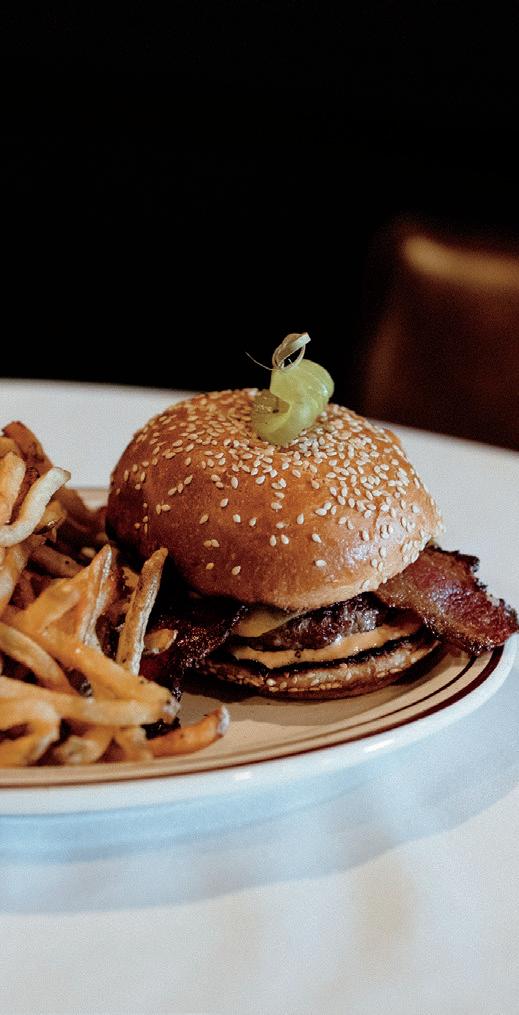



















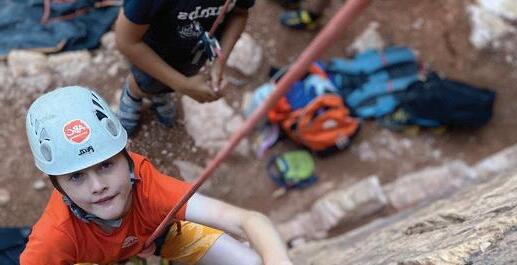






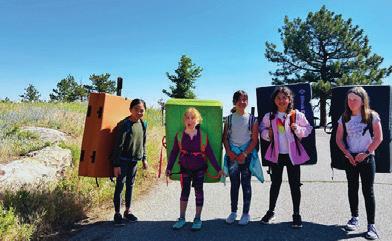

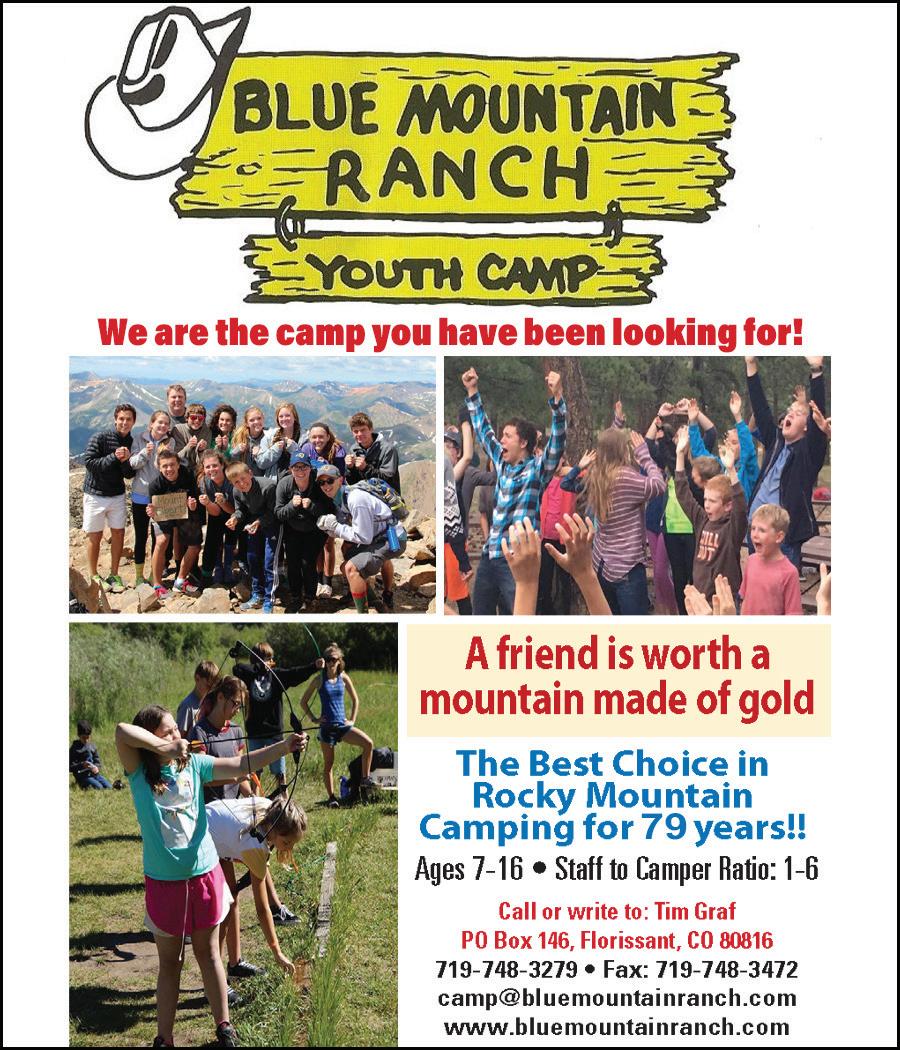


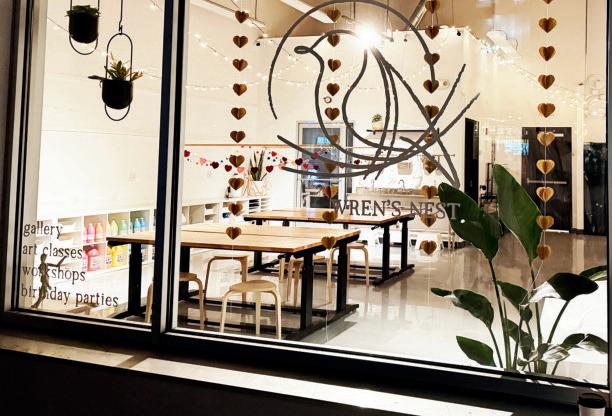
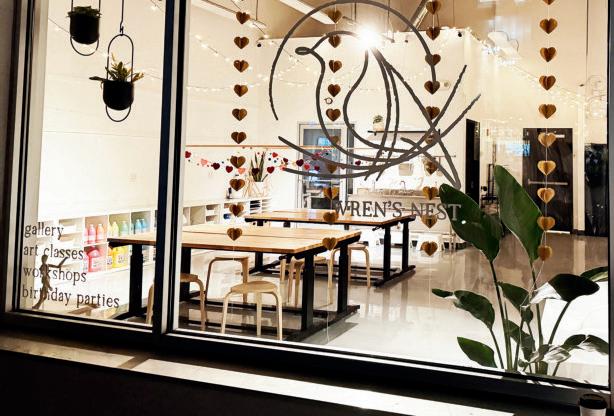







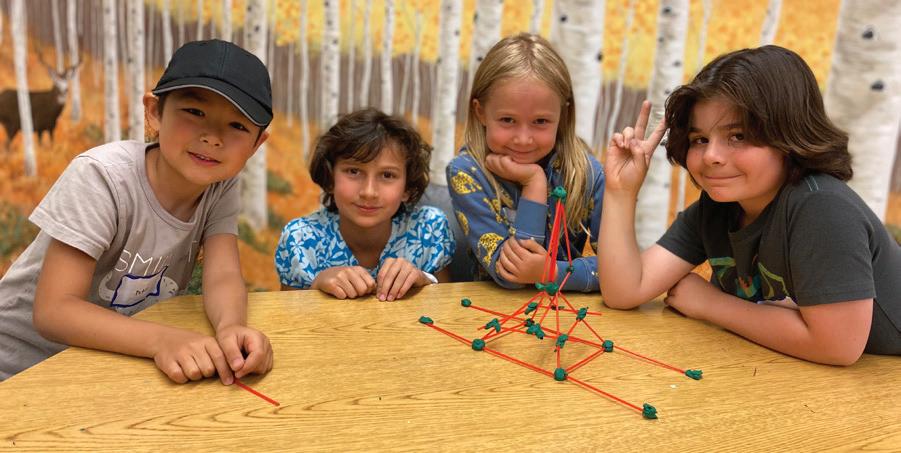


















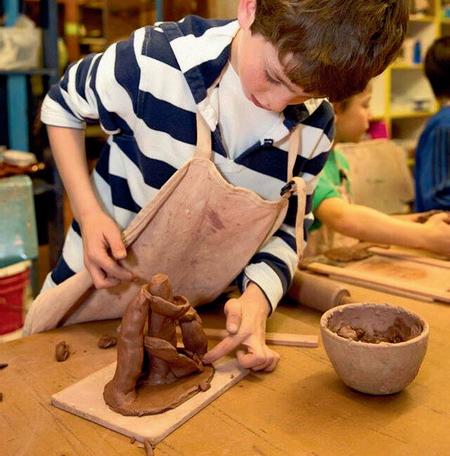





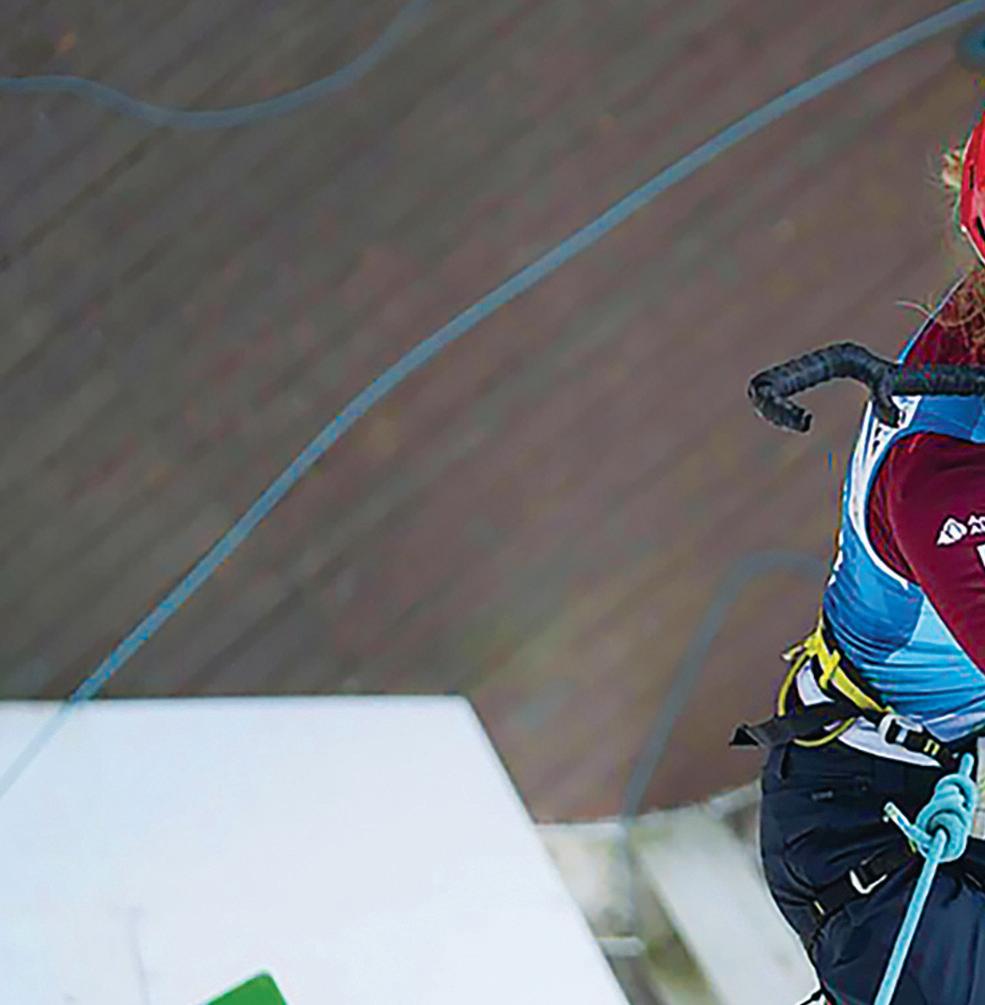
Lafayette’s Catalina Shirley heats up as Ice Climbing World Cup comes to Longmont
BY WILL MATUSKA


There’s 40 feet of ice towering above Catalina Shirley.
The Lafayette resident is moments away from racing her opponent to the top of the crystalized vertical wall in a thrilling display of speed and strength. The winner will be decided in the following seconds of this high-octane competition with little room for error and enough tension to melt a glacier.
She’s in the gold medal match at the first stop of the 2025 Ice Climbing World Tour in Cheongsong, South Korea, an annual series of competitions in different cities, called World Cups, that test elite ice climbers’ endurance, agility, power and nerves in two disciplines: lead and speed.
One slip-up in this speed contest could cost Shirley, 22, one of the biggest races in her career. Looking back on the moment in January, Shirley was as cool as the frosted face ahead of her.
“I was just trying to center myself and focus on climbing the best I could without worrying about the other person,” she said. “And just trusting that would be enough.”
Shirley’s win was her first at a World Cup and only the second for a U.S. ath-
lete. She’s continued to terrorize the podiums since, finishing in the top five in every World Cup competition so far — a rare accomplishment that’s turning heads in international competitive ice climbing.
Shirley will aim to continue her success when Longmont’s own Longmont Climbing Collective (LCC) hosts the event Feb. 22-23, marking the first time in six years the World Cup will be in the U.S. Usually dominated by athletes from other countries in international cities, Shirley’s rise coinciding with Longmont hosting has folks eager to grow the sport domestically, like LCC owner Bryan Hylenski.
“Our hope is that we are one of the five or six World Cups hosted every year,” he said, “and the U.S. will now have one permanently.”
The Ice Climbing World Tour is made up of a series of five World Cups over three months. This year’s stops are in South Korea, Switzerland, France, the U.S. and Canada. It’s a relatively new sport: The tour in its current format, organized by the International Climbing and

Mountaineering Federation (UIAA), started in the early 2000s.
Athletes compete on specially designed routes with ice axes and crampons. Speed walls are sheer ice walls 40 to 50 feet tall. The fastest time wins. Lead climbing is performed on technical artificial routes with features like volumes or overhanging sections that require a high level of strategy and skill. Competitors climb as high as they can within an allotted time. While there are winners of individual events, points are also accumulated throughout the tour to determine an overall champion.
Only one other American has done what Shirley did: Kendra Stritch, who was the first U.S. competitor to top the podium at the Ice Climbing World Tour, a full decade before Shirley.
Stritch, who started climbing in 2012, has watched the sport grow over the years, helping create an official USA Ice Climbing Team in 2016 and watching more athletes and spectators gravitate toward it. Since rock climbing made its Olympic debut in 2020, the UIAA and others have been trying to get ice climbing in the 2030 Winter Games as a full
Olympic sport for the first time. Stritch said it’s rewarding to be part of that evolution.
“It’s just validating to me that we have a really cool sport,” said Stritch, who will also be competing in Longmont. “[Competitive ice climbing] is a unique movement from any other form of climbing. It’s generally fun to watch too. There’s overhanging features, swinging and jumping and stuff. Always with sharp things in your hands and on your feet.”
LCC’s Hylenski lived in South Korea for nine years and competed in some of the first World Cups. While he agreed it is growing domestically, he said the popularity of competitive ice climbing in the U.S. lags behind other countries in part because other governments help build their competition facilities and pay for travel.
“The U.S. hasn’t been able to compete because nobody can afford the cost to put on an event of this size,” he said, explaining that’s why LCC elected to host a World Cup for the next five years.
That means athletes from other countries like South Korea, Switzerland and Mongolia consistently dominate the field. But now that Longmont plans to host


World Cups for the foreseeable future, Hylenski thinks ice climbing will build even more popularity and continue attracting more successful athletes and fans.
Shirley is drawn to ice climbing because of the required problem solving and route reading. The physical requirements of the sport are a given, she said, but the mental component sets people apart.
“Great competitors are strong in the body and in the mind and can overcome challenges a little bit better,” she said. “And they kind of realize where their strength comes from and climb no matter the circumstances.”
Shirley’s trained her mental game since she was a kid hanging around the Ouray Ice Park, not far from where she grew up in Durango. Now she goes into every competition “not expecting anything” — something that’s helped her focus on climbing for herself and having fun.
It’s been paying off. In 2024, she became the first American to podium in a World Cup lead competition, then she did it again this year with a bronze lead medal in France. Along with her gold speed medal in Korea, she also won a silver speed medal in Switzerland this year. With two World Cups yet to go, Stritch said Shirley’s already having a standout season.
“She doesn’t just get a medal: She’s consistently getting onto the podium in two disciplines in each of the World Cups,” said Stritch, explaining that it’s

more common for athletes to specialize in one of the two. “It’s a really impressive accomplishment to consistently perform like that, multiple weeks in a row; not just physically, but also mentally.”
Since Shirley graduated from college in December, this is the first time she has time to compete in all stops of the World Tour. If she keeps up her perpetual podi-
um pace, she could accumulate enough points between World Cups to have a chance at winning the overall World Tour — something no American has done.
She might live in Boulder County and train in local gyms, but Shirley didn’t expect a homecoming in her backyard.

“I was honestly pretty shocked at first that it was going to be here,” she said. “I’ve never gotten to sleep in my own bed at home before a World Cup.”
It was always Hylenski’s plan to support dry tooling and ice climbing by opening the LCC.
“I just want so much for Longmont,” said Hylenski, who said he built the facility to host a World Cup. “I love this city, and I think it would be great to make this event something we do for a long time.”
The Longmont World Cup will be different from most in that it’s based in a growing city along a sprawling metropolitan area — other competitions are mostly in rural, harder-to-reach towns. When it comes to what spectators can expect to see, Hylenski described movements of ice climbing as “a ballet on the wall.”
“Athletes will place their axes on holds, then they’ll leave the wall and go out on fully suspended, free hanging blocks and shapes that they’ll have to navigate to the top of the climb,” he said. “The difficulty portion — that’s the beautiful part to watch.”
Meanwhile, the world is watching Shirley redefine what it means to be a competitive ice climber in the U.S. But she’ll keep her gaze where it counts — between her and the wall in front of her.
“One competition is not who you are as a climber, and instead it’s just important to try your best and have fun,” Shirley said. “So I’m not too nervous. I’m really just excited.”
BY TYLER HICKMAN
Saas-Fee, Switzerland. Cheongsong, South Korea. Champagny-en-Vanoise, France. Longmont, Colorado. What does a city at the eastern edge of Boulder County — occasionally and not-always-affectionately referred to as “Longtucky” — have in common with villages nestled in the snow capped Alps and Korean Ice Valley?
Not much. But on the last weekend of February, it will transform into an international destination hosting more than 100 of the world’s best alpinists. From Feb. 22-23, the International Climbing and Mountaineering Federation (UIAA) is bringing the Ice Climbing World Cup to Longmont, where athletes will compete for the first time on U.S. soil since 2019.
There’s Boulder, a climber’s playground 30 minutes to the west, painted against the unmistakable Flatiron skyline. Fortyfive minutes south, the Mile High City boasts a tourism industry that handles 20 million overnight visitors a year. There’s no shortage of quaint and perpetually snowy mountain towns, with backyard access to some of the toughest routes in North America calling out to climbers around the world. With so many Colorado destinations, Longmont seems like a head-scratcher to host this international event.
So for this edition of our Weekly Why column, Boulder Weekly set out to understand why Longmont is hosting the Ice Climbing World Cup. It might surprise you just how much sense it actually makes.
The 2019 World Cup in Denver was the last time the event, which is hosted in
five cities around the world each winter, was in America. When Bryan and Shauna Hylenski, owners of this stop’s host facility Longmont Climbing Collective, attended the Denver event, they saw an opportunity.
“[Bryan] was just saying to me, ‘Hey, we could do this. This would be so amazing to have in Longmont,’” Shauna Hylenski, the gym’s director of programs said. “It would bring such notoriety to our town, and bring more awareness to this event.”
“It’s definitely a huge undertaking for anyone. A lot of businesses probably wouldn’t want to take on an event of this magnitude.”
When the American Alpine Club hosted the 2019 event in Civic Center Park, they literally built everything from the ground up. They constructed a 60-foot dry-tooling structure — a climbing wall clad with plywood that climbers can sink their ice picks and crampons into without needing any actual ice — on the lawn in the park.
Building a structure just to break it down year after year is cost prohibitive, and weight constraints for the wall in Denver made the structure particularly complicated to build, according to Robert Adie, the UIAA event coordinator for the World Cup.
“I just think that the idea of doing that year after year was not very appealing to the people who put it on initially,” Hylenski said.
The Climbing Collective didn’t have to bid for the event. In fact, they were one of the only locations in the country being seriously considered since the 2019 World Cup. A few cities have shown interest, “but nothing that has come to fruition,” Adie said.
A large part of that is the gym’s existing structure. In 2024, the Climbing Collective converted their 60-foot outdoor wall to a dry-tooling wall for the winter, and changed the routes every six to eight weeks. In October, they hosted their own dry-tooling competition, Picks and Pitons, on the wall.
“There are some other outdoor walls in the United States, but from what I understand they’re not set frequently,” Hylenski said, which makes their wall unique. With the only outdoor dry-tooling wall on the Front Range, the Climbing Collective is an ideal host for the World Cup.
“The crux with a lot of these events, especially for ice climbing, is always going to be the structure,” said Adie. “If you already have a structure, you’re streets ahead of any organizer that doesn’t have one.”
While it doesn’t carry the same weight as the Climbing World Cup — which drew 560 athletes and 17,000 spectators to Innsbruck, Austria, in 2024 — the ice climbing world stage is getting bigger. Around 150 athletes will compete in Longmont, and the 25,000 attendees at the 2019 Denver World Cup made it one of UIAA’s most well-spectated climbing events ever.
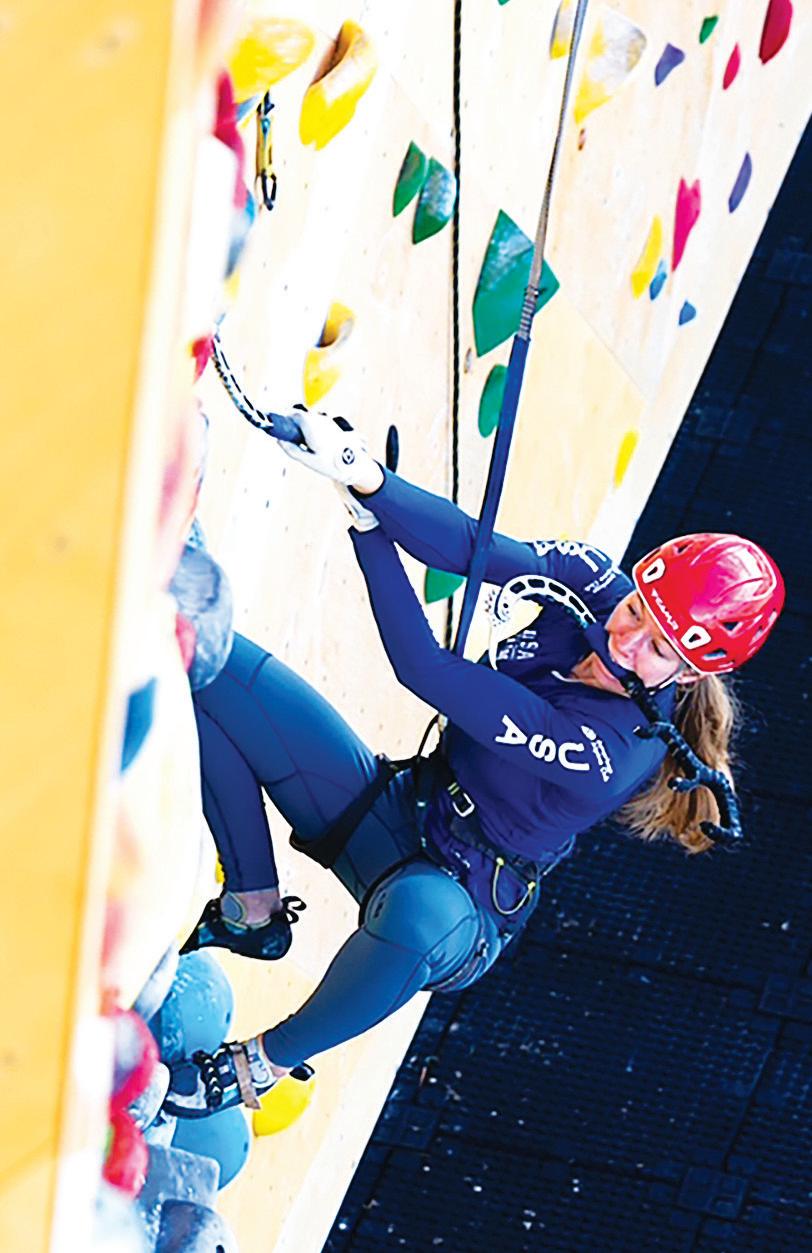
Without Denver’s population and a giant, spontaneous wall catching the eyes of unsuspecting passers by, Longmont likely won’t see those numbers. Between 400-1,000 people are expected to attend the free event each day, according to the city.
With manageable attendance numbers and a ready-made dry-tooling wall, there’s still one formidable peak to summit for the Climbing Collective: the ice.
“I would definitely say that ice wall has been the most complex aspect of putting together an event like this,” Hylenski said.
In addition to the dry tooling, the World Cup holds a speed event on a pillar of ice
— a challenge in a city that averages high temperatures of 47 degrees in February.
The 40-foot frozen wall is built around scaffolding and rebar, with refrigerant lines running through it to keep the ice from melting. Building this wall, too, can be a huge financial burden, Hylenski said. But existing materials from Denver’s oneand-done event set the route to the top for the Climbing Collective.
“If we had to start from scratch like they did, it would have been very daunting,” Hylenski said.
The Hylenskis aren’t strangers to daunting ascents. Bryan has summited peaks in the Himalayas, and they have strong connections to climbing communities in South Korea — another stop on the World Cup circuit — where they lived abroad before returning to the U.S. in 2015. This passion for ice climbing is a rock solid foundation to build an event like this on top of.
“That’s what a lot of these events need,” UIAA’s Adie said, “keen individuals and keen organizations to come, and are motivated to put these cool events on in various places.”
The World Cup isn’t limited to major metros. Saas-Fee, Switzerland, and Champagny-en-Vanoise, France, have populations fewer than 2,000 people. After Edmonton, Canada, Longmont is the second-largest city on the circuit.
“Venues vary massively,” Adie said. “We don’t have to be in cities. We can be in ski resorts. We can be in the mountains. And I think that’s what is unique about the sport of competitive ice climbing, is we can build the structure literally anywhere.”
The Climbing Collective expects to host the World Cup for at least the next five years, along with Winterfest, which will bring food trucks, local breweries and activities for the whole community to the event space. For Hylenski, it’s a chance to bring ice climbing into her community and show Longmont to the world.
“We want to highlight what’s really great about Longmont, what’s really great about Colorado, what’s really great about the United States, because we are the only stop in the U.S. for this entire tour.”
‘Here to Pee’ comedy tour takes on anti-trans bathroom laws
BY TONI TRESCA
Ren Q. Dawe wasn’t expecting to be harassed in the bathroom when he returned home to Boulder. Fresh off the first leg of last year’s Pretty Witty Gay Show tour — where the comedian performed in 40 cities across 16 states — Dawe was glad to be back in familiar territory.
But then, while at a friend’s show, he was confronted in a public restroom by a group of hostile college students.
“My anxious brain was like, ‘Oh no, they’ve clocked me as trans; I’m in trouble,’” Dawe recalls. He managed to slip away, but the experience stayed with him.
“I later realized they probably didn’t know I was trans,” Dawe says. “They just thought I was gay and wanted to do some gay bashing, but it was alarming to have that happen in a place that’s perceived to be so progressive. I really was just there to pee, and I kept spiraling around that concept. It’s real and tragic, but it’s also absurd, so I wanted to make jokes.”
That moment of fear was the catalyst for Here to Pee, a one-of-a-kind national standup tour featuring mostly trans comedians confronting discriminatory bathroom laws with wit and defiance.
“We are saying, ‘We are here, and we’re going to be over there, too, even in places that say they don’t want us,’” Dawe says. “Originally, the idea was just to [perform in] places that were implementing anti-trans bathroom legislation. Then, as we kept digging, we were like, ‘It seems silly to only go to 42 out of the 50 states,’ so now we’re going to go to all 50.”
“There is no evidence that any out queer person that we know of has advertised that they have performed in all 50 states, and certainly no out trans person,” Dawe continues. “As sad as that fact is, it’s also a motivating factor for us.”
Launching March 1 at Boulder’s Junkyard Social Club, the tour will travel to a range of venues across the country. The idea is to bring some much-needed laughs to queer communities under threat, from Alaska to Florida and points in between.
“It’s important that the tour is not forgetting about trans communities that are more impacted by anti-trans rhetoric than those of us who have the luxury of living in sanctuary states,” says tour performer Mx. Dahlia Belle. “Oftentimes, when we’re talking about queer culture, we’re focused on these major metropolitan areas. Politicians profit off of that misconception, so actually going to these places is huge.”

The tour’s proceeds benefit homegrown grassroots LGBTQ+ advocacy groups, like the Boulder-based Rocky Mountain Equality, and the rotating lineup includes Carlos Kareem Windham, Juno Men and special local performers in each state. Windham’s bold, in-your-face approach is especially aimed at shifting the conversation.
“I will be just spreading discomfort to the whites,” Windham says. “If I have to live under this orange bag of goo for the next 1,000 days, everyone’s going to be uncomfortable. I’m not going to do it alone. If we don’t laugh in their faces, I don’t know how we survive this.”


Along the way, the tour is being documented by queer Denver-based filmmaker Jeff Stonic. Dawe hopes the documentary will capture trans life in full fidelity.
“There are not that many stories about trans joy,” Dawe says. “It is always about the trans struggle, and that is real, but we also need to show that being trans isn’t inherently awful. We are a part of this beautiful community that makes better jokes and laughs harder than almost any other.”
Of course, due to discriminatory laws in many states, Here to Pee performers are taking a bigger risk in certain parts of the country than others. That’s why Dawe’s built bail money into the tour’s operational budget, particularly for stops in Utah, Wyoming, Florida and Texas, where anti-trans legislation is particularly punitive.
“We’re going to pee wherever our heart desires,” Dawe says. “That’s not to say we are going out of our way to break the law, but it is more likely to happen in those places. This very much is the definition of civil disobedience, and that makes this really unique, a little bit edgier and a little bit scarier because I want to make sure my performers are kept safe.”
Despite the risks, the tour’s message is clear: In a world that so often seeks to erase trans people, they are here, they belong and they are laughing in the face of hate.
“For me, part of the hope of this tour is to humanize trans people,” Juno Men says. “Politicians aren’t just trying to roll back trans rights — they’re trying to say we don’t exist, which is ridiculous. By performing in so many states where there’s not a lot of understanding of trans people, that’s creating a point of accessibility for people that maybe feel the way they do and think the way they do because they just have never met a trans person.”
ON STAGE: Here to Pee. March 1, Junkyard Social Club, 2525 Frontier Ave. Suite A, Boulder. $20
Colorado artists come together for benefit show supporting L.A. wildfire survivors
BY JUSTIN CRIADO
The Los Angeles wildfires hit close to home for many in the Boulder arts community, including Scott Bauer.
The Colorado Chautauqua’s manager of programming and event operations lived in the City of Angels for a decade before moving to the Rockies in 2021. He has many family members and friends who were impacted by the devastating Eaton Fire, in particular.
“My best friend lives in Altadena, and they were lucky in that they didn’t lose their home,” he says. “But they were displaced for over a month.”
While the fire that burned over 14,000 acres in January has since been 100% contained, the aftermath of the several blazes that spread throughout the county is far from over, which is why Bauer decided to organize the Concert for LA: A Benefit for Wildfire Victims this month, in collaboration with KGNU Community Radio.
“Everyone’s starting to pick up the pieces again and rebuild,” he says. “I’m hoping this benefit can keep them on the map and remind people that they still need help.”
All proceeds will support the Pasadena Community Foundation’s Eaton Fire Recovery and Relief Fund.
Derek Dames Ohl, Dechen Hawk, Caleb Schwing, Daniel Rodriguez, Jake Leg, Sturtz, Heavy Diamond Ring, The Living Room Band and other yet-to-beannounced special guests.
“All of these artists just jumped at the opportunity to participate in the event,”
and devastation, it just so easily gets drowned out by the next news cycle, and you barely hear about it anymore,” Bauer says. “These people who have lost their homes still don’t have anywhere to go.”
The idea was met with immediate enthusiasm among artists and staff. The lineup came together in a matter of days, further proof that others were feeling similarly and wanted to aid in any way they could.
Singer-songwriter Alexa Wildish grew up and went to school in Orange County before settling on the Front Range in

“A lot of my friends live in the Altadena area, so we wanted to pick a charity that was helping hyper-locally,” Bauer says. “The Pasadena Community Foundation does incredible work supporting local nonprofits.”
‘THEY STILL DON’T HAVE ANYWHERE TO GO’
The event includes performances from Jason Hann of The String Cheese Incident, Megan Burtt, Alexa Wildish,
Bauer says. “Some of them have direct connections to friends and family in L.A. as well, or lived out there for a while.”
Concertgoers can also book a stay in a Chautauqua cottage at a discounted rate, with 30% of the proceeds going to the relief fund, through March 31. A silent auction featuring items and care packages from several local organizations is part of the benefit, along with guidance on more ways to give back.
“Despite the scale of the destruction
2016. The Lyons-based musician found herself in Altadena last year while writing and recording her latest EP, After Love, and quickly became fond of the town just north of Pasadena, and its people.
“It had this really sweet, magical feel to it. I started to get to know the locals because I was there for two weeks making this record and living there,” she says. “I actually know a lot of the musicians who are displaced. Thankfully none of them lost their homes directly, but I do
know a couple of people who did.” Wildish says she’s grateful the charity concert is supporting what she considers a second musical home.
“A lot of people had home studios, so there were a lot of instruments being lost,” the 2023 contestant on NBC’s The Voice continues. “I made my record at a home studio in Pasadena. I believe it’s still standing, but I know the family I was working with got displaced for a while, so it’s good to know this is going to that area.”
Both Wildish and Bauer experienced such devastation firsthand during the Marshall Fire in 2021. The most destructive wildfire in Colorado history burned over 6,000 acres, destroying more than 1,000 structures across three days.
“The vulnerability of a fire is so real, and it just heightens everything around you. You have no idea,” Wildish says. “We can only prepare so much for disaster, but at the same time, you try to think of what you would do in that scenario. A lot of people just grabbed what they could and thought they were going to be able to come back. That’s where it just breaks you open, like, ‘I’ve been there. I know that feeling.’” Bauer recalls driving home to the Table Mesa area in South Boulder the night the Marshall Fire broke out, about a mile to the south. Some of his Chautauqua co-workers were more adversely impacted. Helping the people of L.A. serves as a reminder of how quickly something like this could happen here.
“It’s good to keep this stuff top of mind and prepare for it and support others that have been affected by it, just like we would hope to be supported by our broader community,” Bauer says. “Part of the goal is to bring awareness and show some empathy for those in similar situations.”
ON THE BILL: Concert for LA: A Benefit for Wildfire Victims. 7:30 p.m. Wednesday, Feb. 26, Chautauqua Community House, 301 Morning Glory Drive, Boulder. $50
Queer metal duo Ragana find hope in the jaws of suffering
BY JEZY J. GRAY
At first blush, the somber squall of Pacific Northwest black metal duo Ragana sounds like the perfect soundtrack for staring off at foggy mountain peaks and daydreaming of death. But on the opening title track of their latest album, Desolation’s Flower, the band makes a case for staying alive as an act of resistance.
“Unending holy bloom that cannot be denied / We hold eternity, they cannot make us die,” co-vocalist Noel Gilson intones in a guttural, glass-busting shriek. “The ones who came before / When hell was all around / Holy are their names who found desolation’s flower.”
“It’s about the resilience of surviving as a trans person or a queer person in the world,” Gilson tells Boulder Weekly on a video call with longtime bandmate Maria Stocke. “I was thinking about the many different marginalized or oppressed groups throughout history — there are so many stories we will never know because they were destroyed or kept away from the historical record. I was feeling a sense of loss for all these people and experiences we will never be able to access or understand.”
“But there’s this lineage of people who have survived, and they’re never actually going to be able to stop us from existing,” they continue. “That feels really hopeful — and powerful, too.”
Hope goes hand in hand with suffering on Desolation’s Flower, the band’s sixth studio album and first for cult-favorite powerhouse label The Flenser. But just because Stocke and Gilson find glimmers of light in
the muck doesn’t mean there’s not plenty of agony to go around on the record’s seven punishing tracks, blending the low-end rumble of sludge rock and the blood-curdling screech of black metal with a beating heart underneath it all.
“We’ve kept that idea of loss and hopelessness with us from the very beginning,” Stocke, 34, says. “When we were writing [our 2012 debut] All’s Lost, we were so young and immature, and I just had no idea what was happening in the world. I was like a literal baby crawling around on the ground as a formless human, trying to understand what anything meant. Now I’m a fully formed adult, and that just makes life so much harder.”

Since the pair first met as early 20-somethings in the beer aisle of a supermarket in their hometown of Olympia, Washington — “in a small town, the grocery store is the club,” Stocke says — their bond has deepened in tandem with a growing understanding of the world’s agonies. Sharpening their antifascist blade against the whetstone of rising sea levels, threats to queer communities and the growing snarl of authoritarianism, Ragana has spent the last decade-plus staring our grimmest realities in the eye.
“The total crushing despair of the fact that the world is being destroyed, and human lives and animals and plants are being destroyed, it really feels most of the time like there’s nothing anyone can do to stop it,” Gilson, 36, says. “A lot of the music I’ve written has been in response to that feeling of hopelessness.”

ALL OPENERS.
Check out more supporting acts coming to the Front Range, before they become next year’s next big thing.
“You just have to say something about how bad everything is,” they add. “Say it out loud — then other people can feel it with you, and that makes it a little bit better.”
To anchor themselves against the brutal tide of contemporary American life, Stocke and Gilson find solace in the familiar muse of nature. Roots, valleys and mountains dot the lyrical landscape of Desolation’s Flower — and with Ragana’s two-person dynamic allowing some much-needed air in the room, listeners can dwell on these images and turn them over in the light.
“It feels like a natural way of making metaphor and expressing meaning,” Gilson says. “Part of living in Olympia is being surrounded by the forest and water and mist and rain and clouds and fog.
They really give me this sense of inspiration and connection. Land is very powerful — it really draws people here, and I feel like it has something to express.”
“The woods are beautiful, but they’re horrifying,” Stocke adds. “You could get lost in them. Everything is much bigger than you, much more alive. A lot of the music is about how powerful nature is, and how we feel not separate from it, but sort of in awe of it, and sometimes scared.”
As the band share these thoughts during a Jan. 9 video call with Boulder Weekly, the L.A. wildfires are engulfing the city for the second day straight — a somber reminder of nature’s awesome power amid a worsening climate crisis. Gilson, whose earliest memories growing up in Southern California revolve around drought, says the looming threat was formative to their life path.
“That’s one of the things that drew me to the Northwest, because in my mind it was a place that was always going to be damp, where there was always going to be rain,” they say. “Now that’s not true, as we’ve seen. There are wildfires basically everywhere.”
But in true Ragana fashion, this bleak reality offers a seed of hope for these longtime friends and bandmates. As the last line of Desolation’s Flower suggests: “We live in the light of the burning world.” What it looks like on the other side of the blaze, they argue, is up to us.
“These things are going to keep happening,” Gilson says. “There’s really so little that’s in any of our control, but we still have to keep going somehow and figure out how to take care of each other.”
ON THE BILL: Mount Eerie with Ragana. 8 p.m. Saturday, Feb. 22, Fox Theatre, 1135 13th St., Boulder. $38

FRI-SUN | MARCH 14-16, 2025
ADVENTURE FILM TICKETS AT BIFF1.COM/ADVENTURE
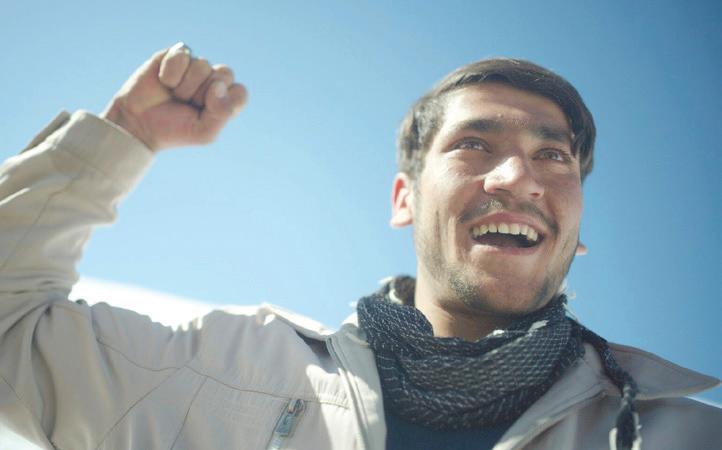


PROGRAM GC - 05
The 2025 Boulder International Film Festival Adventure Film Program features a suite of the world’s greatest new adventure films, with shorts, features, discussions with world-class adventurers and adventure filmmakers, as well as nonprofit groups working on the important issues in the adventure community.
Friday 7:30pm, Grace Commons Church Champions of the Golden Valley US, Feature Documentary, 81 minutes, 2024 Winner of Grand Prize and Audience Choice Award at the 2024 Banff Mountain Film Festival




PROGRAM GC-08
Saturday 2:30pm, Grace Commons Church MOSES – 13 STEPS
Germany, Feature Documentary, 105 minutes, 2024
Executive produced by Morgan Freeman Featuring interviews with Edwin Moses, Spike Lee, Samuel L. Jackson, and Neil deGrasse Tyson
PROGRAM GC-11
Sunday 1:30pm, Grace Commons Church TRI ME: THE SIRI LINDLEY STORY
US, Feature Documentary, 87 minutes, 2024
SPECIAL GUESTS INCLUDE
• EDWIN MOSES, two-time Olympic Gold Medal 400m Hurdles Champion

• SIRI LINDLEY, 2-time World Champion Triathlete


• JAMES BALOG, National Geographic Photographer and Extreme Ice Survey Scientist with the film Chasing Time











After a COVID-induced hiatus, the Brakhage Symposium returns
BY MICHAEL J. CASEY
Kelly Sears isn’t impatient, but she’s eager for the 2025 Brakhage Symposium to begin.
“I’m ready to hit play and see it unfold,” the CU Cinema Studies & Moving Image Arts associate professor and filmmaker says.
She’s not alone. For anyone interested in experimental and poetic cinema, the Brakhage Symposium — March 1-2 in the ATLAS 100 auditorium on campus — is the kind of international event that makes Boulder unique in the cinematic firmament. It’s why Sears is getting messages from artists “around the country who are saying: ‘I need some inspiration. I’m flying out for it.’”
And for Sears, the interim director of the Brakhage Center for Media Arts, the 2025 Symposium has been a long time coming. Five years, to be precise. In the previous decade, the showcase was de rigueur every spring at CU. But then came COVID-19 in 2020, and that year’s event, scheduled for March 14-15, was one of the first things canceled as the campus shut down.
“I feel like right now, it’s extra important for us to gather in person and have community experiences,” Sears says. “And having an opportunity to just be with one another. I still feel that is a huge value after COVID, where we really disbanded. And this is an invitation for us to come back together.”
This year’s symposium will bring together the work of three multi-hyphenate artists: Mike Hoolboom, a Canadian media artist whose work covers the gamut from capitalism to pop culture; the Indiaborn Shambhavi Kaul, a professor in Duke University’s Art, Art History & Visual Studies department specializing in environmental and speculative work; and Beijing’s Lei Lei, who weaves together fragments of abandoned imag-
es and video to create new poetic works.
The connective tissue of the three: Jim Supanick, a CU lecturer and programmer in residence who has worked with UnionDocs in Brooklyn and Flaherty NYC. Sears collaborated with Supanick to bring together filmmakers who represent “a next-level and independent spirit.”
For Supanick, that meant graphing the curation around the Toronto-based Hoolbook, Sears explains. “Mike’s work goes back to the 1980s — he’s so prolific — and his work is eerie, beautiful, profound, deep, mysterious.”
After Hoolboom accepted the invitation, Sears says that Kaul and Lei “came into focus in terms of these questions about travels and passages.”



To round out the program, Supanick suggested a tribute to the recently departed Lillian Schwartz.
“She is a pioneer of computer-generated art and animation,” Sears explains.
“It is incredible stuff. She started making work in the 1970s at Bell Labs.”
Schwartz, who died last October at the age of 97, was a giant in the field.
“But it’s been hard to see her work,” Sears says. “So we got in touch with Kristen Gallerneaux at The Henry Ford
in Michigan [where Schwartz’s work is archived]. Kristen will also be joining us at the symposium to share a little bit about Lillian’s archive and Lillian’s history.”
Also attending the Schwartz tribute is Rebekah Rutkoff, who was a close friend of Schwartz and wrote “a beautiful article in Artform about her work.”
The addition of the Schwartz tribute was a fortuitous strike.
“We wanted to honor Lillian, but then
realized: ‘Oh, there’s some real conversations happening between Lillian’s work and the other three filmmakers,” Sears says. “It just keeps coming more into focus.”
Like all Brakhage Center events, the March screenings are free and open to the public.
“That’s kind of the ethos of the symposium: an invitation,” Sears explains. “We’ll be doing introductions for all the filmmakers we’ll be screening. Because we want to invite people into the work, we want people to have the door open and have a way to enter.”
And enter you should, as the work you will see here is not something you’re going to readily find streaming.
“If you spent the day on Google, you would not get a fraction of what we’re going to be showing,” Sears says. “But, the other thing is, when you’re searching online, you’re usually at home alone.”
Sears circles back to her greatest anticipation for this year’s Brakhage Symposium: familiar and new faces gathering together to enjoy “some really poetic, exciting new forms of cinema.”
“I think it’s going to be an incredible weekend,” she says. One she hopes “will open the door for more possibilities.”
ON SCREEN: The Brakhage Symposium, March 1-2, ATLAS 100, University of Colorado. Free

7-9 p.m. Thursday, Feb. 20, Longmont Museum, 400 Quail Rd. Free
“Can you separate the art from the artist?” That is the central question animating an upcoming panel discussion at Longmont Museum exploring the French modernist’s “controversial views” and treatment of women. Presented in conjunction with the museum’s ongoing exhibition A Graphic Journey: Prints by Pablo Picasso, the conversation will be moderated by DARIA Art Magazine founder and editor Genevieve Waller.
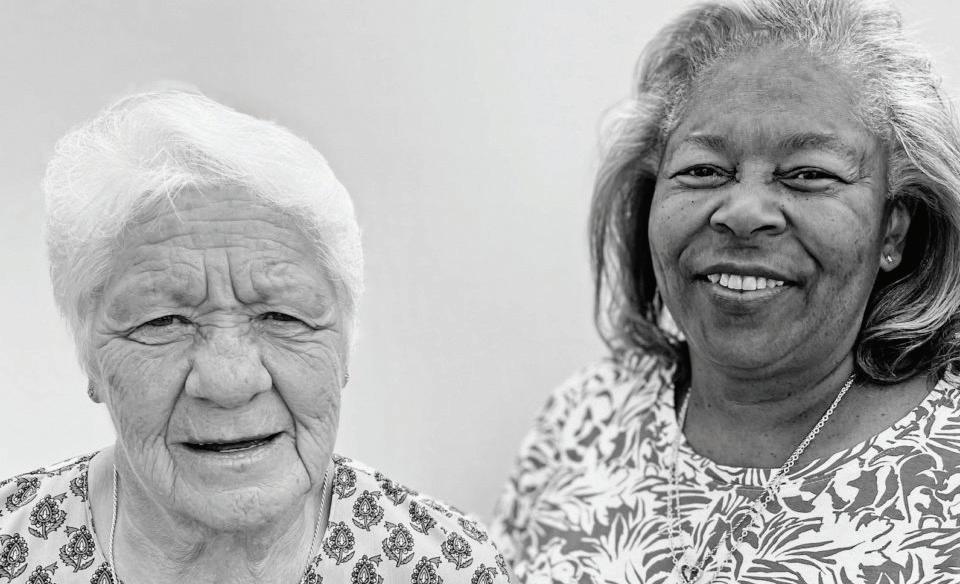
21
EYE TO EYE: PORTRAITS OF PRIDE, STRENGTH, BEAUTY
9 a.m. to 5 p.m. Friday, Feb. 21, Museum of Boulder, 2205 Broadway. $10
Don’t miss opening day of a new photography exhibition at the Museum of Boulder highlighting women elders in the LGBTQ community. Selected from interviews with nearly three dozen people ages 59-85, this portrait series by artist and CU professor Carey Candrian — on display through April 20 — celebrates women who “grew up when coming out meant risking their health, their jobs, their housing, their families, their friends.”

5-7 p.m. Friday, Feb. 21, St. Vrain Cidery, 350 Terry St. Ste. 130, Longmont. Free
This ain’t your pappy’s porch jam. With 36 ciders on tap and a two-hour, all-levels jam session open to the public, you’re in for a night of hootin’ and hollerin’ with Dr. Phil and Alex B., who promise a humble hangout for lovers of cider and strings, whether you’re there to listen or join in.

8-9:30 p.m. Friday, Feb. 21, 640 Main St., Louisville. $12
What do you get when you cross Whose Line is it Anyway with SNL? Improv Boulder’s Friday night Improvarama show — at least according to the group. Expect good, clean comedy at this 21+ event and get ready to make suggestions that will drive the show.

8:30-10 p.m. Saturday, Feb. 22, Dairy Art CenterBoedecker Theater, 2590 Walnut St., Boulder. $15
Denver comedian and actor Janae Burris headlines this regular night of laughs at the Dairy Arts Center’s Boedecker Theater. Hosted by Boulder’s own Zoe Rogers, the evening will also feature the stand-up stylings of local comics Lisa Lane, Britt Boyd and Carl Murata.

8:30 a.m. to 8:30 p.m. Saturday, Feb. 22 and 10:00 a.m. to 8:00 p.m. Sunday, Feb. 23, Longmont Climbing Collective, 155 Pinnacle St. Free
The whole world’s eyes will be on Longmont this weekend — well, the ice climbing world, at least. Head to the Climbing Collective for the first Ice Climbing World Cup event in the U.S. since 2019, and see the planet’s best alpinists compete for the crown. Local breweries and food trucks join for Winterfest to bring this can’t-miss event to BoCo’s new climbing capital. See p. 12 for more on what’s in store.

2-3:30 p.m. Saturday, Feb. 22, Moss Houseplants, 3008 Folsom St., Boulder. $50
Are your houseplants looking sad and shriveled? It might be time to see an expert. Head to Moss Houseplants and create a fresh, healthy succulent ecosystem (with the guiding hand of a green thumb) for you to take home and replace those slowly dying baby jade plants. Just pay attention this time; you’ve killed enough innocent plants already.

1-5 p.m. Saturday, Feb. 22, Bootstrap Brewing, 142 Pratt St., Longmont. Free
Sub-freezing temperatures are on the horizon once again, but why have a chilly weekend when you can have a chili weekend? Bootstrap Brewing’s chili cookoff is free for both tasters and competitors, and competitors get a free pint, too. Get ready to bring the heat!

10 a.m. to 4 p.m. Sunday, Feb. 23, Boulder County Fairgrounds, 9595 Nelson Road, Longmont. Free
No llama drama here: The annual Alpaca Extravaganza is back, featuring a whole bunch of the animals in question to pet and play with, and the softest alpaca goods for purchase. Visit the Boulder County Fairgrounds this weekend for a furry, fuzzy good time.

6:30-8:30 p.m. Thursday, Feb. 27, eTown Hall, 1535 Spruce St., Boulder. $18
Meet Boulder Weekly’s own John Lehndorff as he and local restaurateur Dave Query of Big Red F Restaurant Group (Jax Fish House, West End Tavern, The Post, Centro, Velvet Elk Lounge) talk about the past, present and future of food in Boulder. $1 from every ticket goes toward hunger relief on Pine Ridge Reservation in South Dakota.

7 p.m. Thursday, Feb. 27, Macky Auditorium, 1595 Pleasant St., Boulder. $29
Support students and sustainability at this fashion show featuring outfits crafted from found materials. Middle and high school students use tea bags, product packaging, bubble wrap, climbing rope and other non-recyclable, non-compostable goods to create high fashion.

7-9 p.m. Thursday, Feb. 27, Longmont Museum, 400 Quail Road. $12
Embrace these surreal times with surrealist films from the genre’s pioneers. Featuring Entr’acte (1924, 22 minutes), The Seashell and the Clergyman (1928, 38 minutes) and Un Chien Andalou (1929, 16 minutes). Before the show, enjoy extended hours of the Picasso exhibit. Can’t get enough of the weird stuff? Check out Michael J. Casey’s feature on the return of CU’s experimental film series on p. 19.




THURSDAY, FEB. 20
THE 89S 5 p.m. Bricks on Main, 471 Main St., Longmont. Free
TONY CRANK CLASSICAL GUITAR. 6 p.m. Bootstrap Brewing Company, 142 Pratt St., Longmont. Free
DENTEC. 6:30 p.m. Club 156, 1669 Euclid Ave., Boulder. $5
ROCKY MOUNTAIN KIRTAN 7 p.m. eTown Hall, 1535 Spruce St., Boulder. $25
FORTY FEET TALL WITH SHADOW WORK AND SUPREME JOY. 7 p.m. Hi-Dive, 7 S. Broadway, Denver. $19
JEREMY JOUVE 7:30 p.m. Grusin Music Hall, 1020 18th St., Boulder. Free
LOOKIN BACK 7:30 p.m. Nissi’s, 1455 Coal Creek Drive, Unit T, Lafayette. Free
SUPERPOWERS WITH DAMIYR AND SARAH CONNER 7:30 p.m. Roots Music Project, 4747 Pearl St., Suite V3A, Boulder. $22
FRANC MOODY WITH PHOEBE NIX 8 p.m. Fox Theatre, 1135 13th St., Boulder. $46
RAILROAD EARTH 8 p.m. Boulder Theater, 2032 14th St. $55
RIPCORDS WITH CODEFLAWED AND TINNITUS 8 p.m. Globe Hall, 4483 Logan St., Denver. $20
FRIDAY, FEB. 21
CAT JERKY 5:30 p.m. Left Hand Brewing, 1265 Boston Ave., Longmont. Free
LAURIE D 5:30 p.m. Dickens Opera House, 300 Main St., Longmont. Free
AOXOMOXOA 6 p.m. Bootstrap Brewing Company, 142 Pratt St., Longmont. Free
SGT. SPLENDOR WITH ALPHATONES 7 p.m. The Caribou Room, 55 Indian Peaks Drive, Nederland. $20
DAN KENNEDY 7 p.m. Boulder Piano Gallery, 3111 Walnut St., Boulder. $15
OTT WITH BLOOMURIAN 7 p.m. Boulder Theater, 2032 14th St. $35
BLUEHOUSE WITH GROVE AND SKETCHWORK. 8 p.m. Fox Theatre, 1135 13th St., Boulder. $20
TAPER’S CHOICE WITH TOM HAMILTON. 8 p.m. Velvet Elk Lounge, 2037 13th St., Boulder. $28
JANE AND MATTHEWS WITH THE O’CONNOR BROTHERS. 8 p.m. Roots Music Project, 4747 Pearl St., Suite V3A, Boulder. $15
CARDINAL BLOOM WITH NEIGHBORHOOD WATCH AND MOONPOOL 8 p.m. Globe Hall, 4483 Logan St., Denver. $20
B-LOVE EXPERIENCE 9 p.m. Mountain Sun Pub, 1535 Pearl St., Boulder. Free
CYMANDE WITH BATHE 9 p.m. Bluebird Theater, 3317 E. Colfax Ave., Denver. $37
SATURDAY, FEB. 22
GII ASTORGA. 5 p.m. 300 Suns Brewing, 335 1st Ave., Unit C, Longmont. Free
KGNU MARDI GRAS BASH WITH STEP RIDEAU AND THE ZYDECO OUTLAWS 7 p.m. Avalon Ballroom, 6185 Arapahoe Road, Boulder. $44
SHAKEDOWN STREET 8 p.m. Boulder Theater, 2032 14th St. $18 (free before 9 p.m.)
GITKIN WITH GIO CHAMBA 8 p.m. Velvet Elk Lounge, 2037 13th St., Boulder. $19

MOUNT EERIE WITH RAGANA 8 p.m. Fox Theatre, 1135 13th St., Boulder. $38 BW PICK OF THE WEEK
CHALK DINOSAUR WITH SPECIAL GUEST (TBA) 8:30 p.m. Roots Music Project, 4747 Pearl St., Suite V3A, Boulder. $15
B-LOVE EXPERIENCE. 9 p.m. Mountain Sun Pub, 1535 Pearl St., Boulder. Free
KLUTCH BEAT BASS N’ BOUNCE. 10 p.m. Bounce Empire, 1380 S. Public Road, Lafayette. $34
SUNDAY, FEB. 23
STRANGEBYRDS 2 p.m. 300 Suns Brewing, 335 1st Ave., Unit C, Longmont. Free
LOCO UKULELE JAM. 2 p.m. Bootstrap Brewing Company, 142 Pratt St., Longmont. Free
SCOTT VON 4 p.m. Left Hand Brewing, 1265 Boston Ave., Longmont. Free
Led by sole member Phil Elverum, experimental lo-fi folk outfit Mount Eerie has stood the test of time since crashing onto the scene under The Microphones moniker near the turn of the century. The prolific, Washington-based artist comes to The Fox Theatre on Feb. 22 on the heels of his latest album, Night Palace, out now via his own independent record label, P. W. Elverum & Sun. Flip to p. 16 for a feature on black-metal opening act Ragana — who will also join Elverum on stage as his backing band — before you go. See listing for details Want more Boulder
THE HIGH ROAD HOME 5 p.m. Bricks on Main, 471 Main St., Longmont. Free
DERVISH 8 p.m. Boulder Theater, 2032 14th St. $27
MONDAY, FEB. 24
MUSE JAZZ JAM. 7 p.m. Muse Performance Space, 200 E. South Boulder Road, Lafayette. Free
CAMPING IN ALASKA WITH SILVER FERN, LAGRIMAS AND GRATHER WAY. 8 p.m. Marquis Theater, 2009 Larimer St., Denver. $27
TUESDAY, FEB. 25
MOLCHAT DOMA WITH SEXTILE 8 p.m. Mission Ballroom, 4242 Wynkoop St., Denver. $57
WEDNESDAY, FEB. 26
JAY ROEMER BAND 6 p.m. Rosalee’s Pizzeria, 461 Main St., Longmont. Free
NELSON RANGELL. 7:30 p.m. Nissi’s, 1455 Coal Creek Drive, Unit T, Lafayette. $20








BY ROB BREZSNY
ARIES (MARCH 21-APRIL 19): The Hindu holiday of Maha Shivaratri is dedicated to overcoming ignorance and darkness in celebrants’ own lives and in the world. This year it falls on February 26. Even if you’re not Hindu, I recommend you observe your own personal version of it. To do so would be in accordance with astrological omens. They suggest that the coming weeks will be an excellent time for you to be introspective, study your life and history and initiate changes that will dispel any emotional or spiritual blindness you might be suffering from. P.S. Remember that not all darkness is bad; some is unhealthy and demoralizing, and that’s the kind you should banish and transmute.
TAURUS (APRIL 20-MAY 20): The blue whale is the most massive animal that has ever lived. You could swim through its arteries. Its heart is five feet high and weighs 400 pounds. And yet, when diving, its pulse slows to four-to-eight times per minute. I propose we choose the blue whale to be your mascot in the coming weeks. May this magnificent beast inspire you to cultivate slow, potent rhythms that serve you better than hyperactivity. Let’s assume you will accomplish all you need by maintaining a steady, measured pace and by focusing on projects that require depth and diligence rather than speed. Your natural persistence will enable you to tackle tasks that might overwhelm those who lack your patience.
GEMINI (MAY 21-JUNE 20): Over 10,000 years ago, someone walked for a mile through what’s now White Sands National Park in New Mexico. We know they did because they left footprints that were fossilized. Scientists believe it was probably a woman who mostly carried a child and sometimes let the child walk under its own power. Like those ancient footprints, your actions in the coming weeks may carry lasting significance — more than may be immediately apparent. I encourage you to proceed as if you are making a more substantial impact and having a bigger influence than you imagine.
CANCER (JUNE 21-JULY 22): What’s the oldest known recipe? What ancient food product did our ancestors write down instructions about how to make? It was beer! The 4,000-year-old Sumerian text included a hymn to Ninkasi, the goddess of beer. It tells how to use the right ingredients and employ careful fermentation to concoct a beverage that lowers inhibitions and brings people together in convivial celebration. In that spirit, Cancerian, I encourage you to meditate on the elements you can call on to create merrymaking and connection. Now is a good time to approach this holy task with extra focus and purposefulness.
LEO (JULY 23-AUG. 22): In November 1963, the captain of a sardine boat sailing near Iceland noticed a column of dark smoke rising out of the water. Was it another boat on fire? No, it was the beginning of a volcanic eruption. A few days later, steady explosions had created a new island, Surtsey, which still exists today. I suspect you will have a metaphorically comparable power in the coming weeks, Leo: an ability to generate a new creation out of fervent energies rising out of the hot depths. Be alert! And be ready to harness and make constructive use of the primal force.
VIRGO (AUG. 23-SEPT. 22): Harald
“Bluetooth” Gormsson was a 10th-century Danish king. He united the tribes of Denmark into a single kingdom. His nickname originated in the fact that he had a prominent dead tooth that turned bluish-gray. More than 10 centuries later, engineers who created a new shortrange wireless technology decided to call their invention “bluetooth.” Why? Because they imagined it would serve a variety of electronic devices, just as the king once blended the many tribes. In the spirit of these bluetooth phenomena, I’m urging you Virgos to be a uniter in the coming weeks and months. You will have an enhanced capacity to bridge different worlds and link disparate groups. P.S. An aspect that could be construed as an imperfection, like Harald’s tooth, could conceal or signify a strength.
LIBRA (SEPT. 23-OCT. 22): Libran author Ursula K. Le Guin wrote, “Freedom is a heavy load, a great and strange burden for the spirit to undertake.” I know from experience there’s truth in that idea. But I’m happy to tell you that in 2025, freedom will be less heavy and less burdensome than maybe ever before in your life. In fact, I suspect liberation will be relatively smooth and straightforward for you. It won’t be rife with complications and demands, but will be mostly fun and pleasurable. Having said that, I do foresee a brief phase when working on freedom will be a bit more arduous: the next few weeks. The good news is that your emancipatory efforts will set the stage for more ease during the rest of 2025.
SCORPIO (OCT. 23-NOV. 21): Always and forever, the world is a delicate balance of seemingly opposing forces that are in fact interwoven and complementary: light and shadow, determination and surrender, ascent and descent, fullness and emptiness, progress and integration, yes and no. The apparent polarities need and feed each other. In the coming weeks, I invite you to meditate on these themes. Are there areas of your life where you have been overly focused on one side of the scale while neglecting the other? If so, consider the possibility of recalibrating. Whether you are balancing emotion with logic, rest with work, or connection with independence, take time to adjust. If you honor both halves of each whole, you will generate fertile harmonies.
SAGITTARIUS (NOV. 22-DEC. 21):
The ancient stands of cedar trees on Japan’s Yakushima Island have a special power. They create weather patterns for themselves, generating rain clouds from the water vapor they release through their leaves. This ingenious stroke of self-nurturing provides them with the exact rainfall they require. I propose that we make these cedar trees your power symbol in the coming weeks. It’s an excellent time for you to dream up and implement more of the conditions you need to flourish.
CAPRICORN (DEC. 22-JAN. 19):
Tardigrades are tiny, eight-legged animals colloquially known as water bears or moss piglets. Their resilience is legendary. They can thrive anywhere, from mountaintops to the deep sea, from Antarctica to tropical rainforests. They can withstand extreme temperatures, live a long time without water and even survive in outer space. I propose we make tardigrades your inspiration for the coming weeks, dear Capricorn. Your flexibility and fluidity will be at a peak. You will be hardy, supple and durable. It will be a favorable time to leave your comfort zone and test your mettle in new environments. Seemingly improbable challenges may be well within your range of adaptability.
AQUARIUS (JAN. 20-FEB. 18): In the coming days, playing games could be good practice for life. Breezy exchanges and fun activities could stimulate clues and insights that will be useful in making important decisions. What appears to be ordinary entertainment or social engagement may provide you with profound lessons about strategy and timing. How you manage cooperation and competition in those lighter moments could yield useful guidance about more serious matters.
PISCES (FEB. 19-MARCH 20): Have you been struggling to summon the motivation to start anew in some area of your life? I predict that sometime in the coming weeks, you will find all the motivation you need. Have you been wishing you could shed the weight of the past and glide into a fresh project with an unburdened mind and heart? I believe that destiny will soon conspire to assist you in this noble hope. Are you finally ready to exorcise a pesky ghost and dash jubilantly toward the horizon, eager to embrace your future? I think you are.
How can I have sex when my 18-year-old stepdaughter is home? It makes my boyfriend uneasy!
Instead of going without when your stepdaughter is around, why not go and get in your car or go lock yourself in the bathroom of a sleazy bar and have sex there? Then instead of resenting your boyfriend’s daughter for preventing you from having sex, you’ll be grateful to this kid — secretly grateful — for all the exciting, crazy, adventurous sex you’re having all over town with her dad.
BY DAN SAVAGE
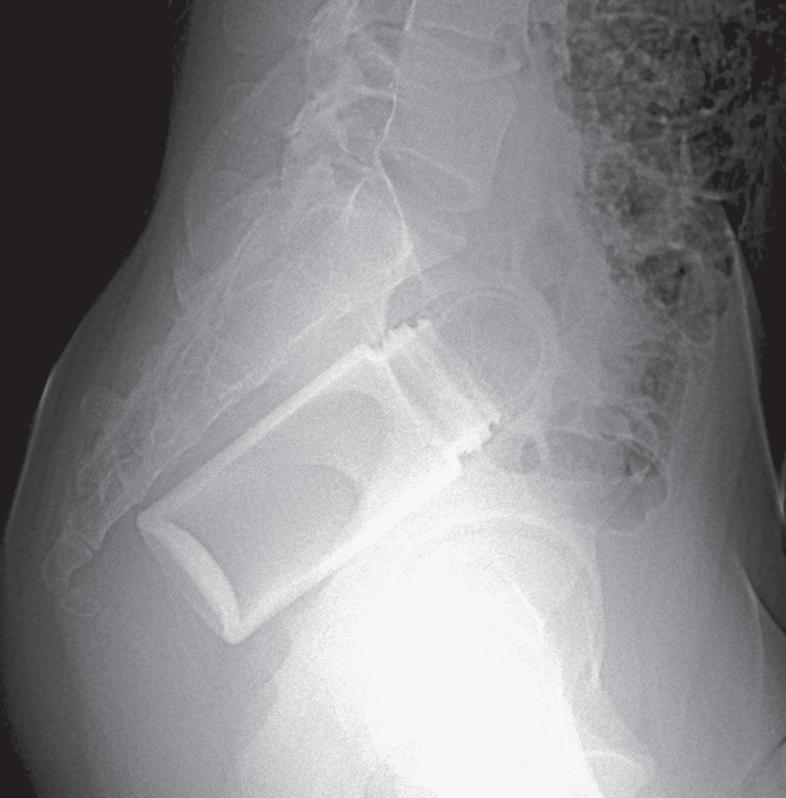
What’s the best way to let a new partner know I’m inexperienced in the bedroom?
You can show ’em or you can tell ’em. And since there’s nothing more deflating than the look on someone’s face as they slowly realize you don’t know what you’re doing, telling is by far the better choice. Remember: Low expectations are easily exceeded.
My boyfriend expressed interest in butt stuff while drunk but denied it when sober. Should I drop it?
Make sure there’s always beer in the fridge and trust that your boyfriend will bring up butt stuff when he’s ready/ drunk.
Wife and I have been poly for about four months now. She doesn’t want to meet my new partner. Help!
Help for Wife: You’re under no obligation to meet your husband’s new partner — and that goes double if you’re poly under duress. When you’re ready to meet your husband’s new partner, you can. If you’re never ready to meet her, you don’t have to.
Help for Husband: If your new partner is giving you grief because she hasn’t met your wife yet, your new partner — consciously or subconsciously — is trying to sabotage your marriage.
Help for New Partner: If you’re demanding to meet with your new partner’s wife before she’s ready, you need to drop it. If your new partner is trying to force this meeting on his wife, you need to drop him.

Do you think medical professionals posting memes/photos of “foreign objects in the rectum” is kink shaming?
If losing a lightbulb in your ass and winding up in the ER is your kink, the medical professionals who have to fish out that light bulb have every right to kink shame your ass.
I’ve been lonely in my marriage longer than I can remember, and I’ve found an exquisite lover. My lover is in a similar situation. I’ve always admired and learned from your caring common sense, and I’d like to know if you might recommend therapy to help me figure out how to live from here on.
“Like this letter writer, I came alive in the throes of an affair,” said Rebecca Woolf, author and essayist. “So, while I think therapy might benefit her, it sounds like this affair has been more therapeutic than anything else could possibly be. So, to the letter writer I would say this: Your pleasure, your vitality, your life force matters — as does its relationship to your loneliness. If you choose to work with a therapist to help you navigate this moment, please make sure you find someone who will validate your exploration as well as your departure from the loneliness you have felt in your marriage.”
Email your question for the column to mailbox@savage.love or record your question for the Savage Lovecast at savage.love/askdan. Podcasts, columns and more at Savage.Love









BY JOHN LEHNDORFF
Admit it: You loathe cooking. It is easy to see why so many people hate preparing food, opting to overspend on pre-chopped and processed ingredients to save time and effort.
As a society, our knife skills suck. It is truly scary to watch amateurs hack, stab and endanger their fingers with horrible knives that are never sharpened and thrown in a drawer.
If we spent as much time and less money on good knives and a class than our new iPhones, we’d be set for the rest of our ever-cookin’ lives.
I first learned how to use a knife from a chef at Yocom’s Studio Restaurant, now The Riverside. With the right set of knives and a little know-how, you too can achieve Jedi-like status and terrify family and friends by chopping, mincing, slicing and dicing without looking down at your fingers.
“I can lift my head up and look around the kitchen as I’m cutting, because I can feel where my knife is,” says John Percarpio, chef instructor at the Auguste Escoffier School of Culinary Arts in Boulder. “I’m never going to cut myself.”
Percarpio has worked in restaurant kitchens across the globe. According to him, they all have one thing in common: knives and first aid kits.
“I was 18 when I started working in a restaurant as a dishwasher. When there were no dishes, they’d make me do prep work. That’s when I picked up my first knife,” he says. “I never had many big wounds, because you learn not to do it wrong pretty quickly.”
If you’re going to cook well, quickly, safely and cheaply, you need good knives, according to Percarpio.
“You don’t have to spend crazy money. What’s necessary is that you
get a good knife — high carbon steel, with a full tang — one piece of metal from point to handle,” he says.
A good chef’s knife can be found for $75-$125 at local stores like McGuckin Hardware and The Peppercorn, as well as online. Percarpio recommends knives made by Mercer, which are sold at the Escoffier.
Dozens of knives are available for all sorts of obscure cutting needs, but most cooks use only a handful.
“The chef’s knife is the Ford F-150, the productive knife you use the most,” Percarpio says. “It has a curve to the blade to allow it to rock when you chop, an elliptical motion. You never tap the knife and lift it off the board.”
This pint-sized blade is perfect for many small cutting tasks. It’s small stature gives maximum control, making it ideal for peeling fruits and vegetables.
The saw-like teeth make this knife ideal for slicing through tougher materials. Serrated knives typically come in two varieties: bread (usually longer with a blunt or rounded tip) and steak (typically smaller and ending in a point).
Boning knives are characterized by their sharp tips and narrow blades. They are, as the name suggests, used for removing bones from meat. But they can also be

handy for coring fruits.
“If I added one knife, it would be a boning knife,” Percarpio says. “It’s the Porsche. Boning knives are great for carving around corners. It bends around fruit, fish or meat.”
Once you have the right tools, you have to become one with the blade. You must master your non-dominant (and sometimes dumb) hand.
“Mastering the other hand holding what you’re cutting is the hardest part about knife skills. If you are right-handed, your left hand is your guide hand. The side of the knife bumps into your bended fingers,” he says. “If you use a guide hand, you feel where your knife is the whole time.”

When Percarpio interviewed young cooks for kitchen jobs, he says his first question was to ask them to cut up an onion. If the knife lifted above the guide hand of the board, it was sometimes the last question he asked.
“I’ve seen some really dangerous things,” he
says, “like The Horseshoe — grabbing an onion with your hand wrapped around it cutting into it sideways.”
The edge of any blade should never cut toward any portion of your anatomy.
Percarpio does not approve of those “easy” handheld sharpening devices. “It’s a one-tool solution for a complicated problem, because each knife has a unique blade,” he says.
It helps if you understand the physics of blades to know how to sharpen them.
“If you look at a microscopic image of the blade on a straight edge knife, it would look serrated with small teeth,” he says. “As you cut all day, these teeth bend. When you use a steel to hone it, you straighten out the teeth again but eventually you have a dangerous, dull knife.”
A good in-person or online course will protect your investment in tools by showing how to use, sharpen, clean and store knives. Among the Boulder County options:
• Auguste Escoffier School of Culinary Arts: escoffier.edu/about/ cooking-classes-boulder
• Food Lab: foodlabboulder.com
• Sur La Table: surlatable.com
• Longmont’s Journey Culinary: journeyculinary.com






























After recently shuttering three local eateries, including Farow in Niwot, Patrick and Lisa Balcom have launched Farow at Home (farowathome.com), an online home for sustainably focused recipes, cooking and baking demos and classes. Beautiful ceramic dinnerware, serving platters and drinking vessels crafted by 80 U.S. artists are on display at delecTABLE: The Fine Art of Dining open at the Art Students League of Denver. (ASLD).
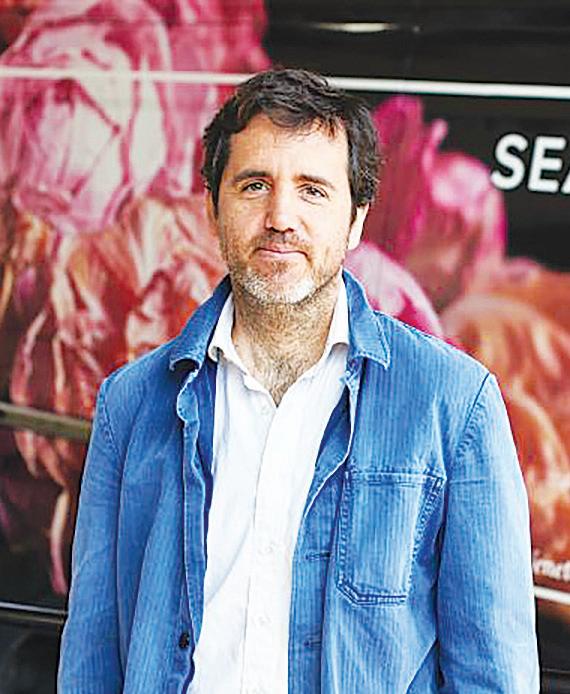

Next door, Food-tography highlights culinary photography far beyond cell shots of onigiri at that hot sushi joint.
Franco Fubini, a grocer and professor of sustainability management, chats about his new book, In Search of the Perfect Peach: Why Flavour Holds the Answer to Fixing Our Food System, on March 6 at the Boulder Bookstore. Mara King, acclaimed director of fermentation for Basta and other local eateries, joins him: bit.ly/FubiniBW.
Organic fruits and vegetables still only generated about 12% of total produce sales in the U.S. last year despite being widely available. Higher organic produce prices are the primary impediment to growth, according to The Produce News
“We’ve earned the right to forget about stupefying household busywork, but kitchens — where food is cooked and eaten — those are really a good idea.”
–Novelist Barbara Kingsolver
John Lehndorff, who learned to chop in Boulder restaurant kitchens, will join Big Red F restaurateur Dave Query and host Nick Forster onstage at eTown Hall on Feb. 27 for a chat about Boulder dining. Tickets: bit.ly/eTownLehndorffBW






New KGNU series ‘Lethal’ features mothers of overdose victims
BY SHAY CASTLE
“Every minute” of Joey Jankowski’s life “was spent living,” his mom, Sabrina, says. She describes Joey’s love of the outdoors, his “daredevilish” personality, his dawn-till-dusk schedule that he packed with work, friends and family.
She also recounts the night he died. How they shared a late dinner after his workday and nine rounds of golf. The last hug he ever gave her. How he looked when she found him in his bed, sitting up, his nose and mouth covered in foam he aspirated after taking cocaine mixed with a deadly dose of fentanyl.
Sabrina and Joey’s story make up the first installment of Lethal, a new series from KGNU profiling seven mothers who lost children to fentanyl, the synthetic opioid fueling an overdose crisis throughout Colorado and the United States.
Like Sabrina, the mothers are desperate to communicate the dangers this new drug poses, and to dispel misperceptions about victims of overdose.
“They feel like fentanyl is another category of drug,” said Jackie Sedley, the series’ creator, producer and host.
“I’m not saying that my son was ever innocent, because young people do stupid things,” Sabrina tells Sedley in Episode 1. “These are the days you can’t do that any longer.
“Drugs have never been safe, obviously, but now they’re killing people.”
The mothers also want their children to be remembered as more than just statistics, a goal Sedley shared.

“Some of these kids who died from fentanyl poisoning were first-time experimenters,” they said. “Others were more in the throes of their addiction. But at the end of the day, all of their lives were just as worthy.”
For Sedley, the goal is to destigmatize addiction so conversations about drug use become more frank and honest which they believe will make it easier to seek help.
“I know so many people who have those assumptions of what a person with drug abuse looks like, sounds like, acts like, and they don’t get us anywhere,” they said. “Stigma stands in the way of resources. Stigma stands in the way of equitable access. Stigma stands in the way of change.
“The takeaway I hope people walk away from the series with is that holding this stereotypical representation of what you imagine when you think of someone who struggles with drug abuse… It’s not reality.”
The mothers and children whose stories Sedley shares are evidence of the
breadth of the fentanyl crisis. In 2023, more than 74,000 Americans died due to an overdose of synthetic opioids like fentanyl, according to the Centers for Disease Control.
Behind every number is a story like the ones Sedley shares on Lethal “If we don’t uplift stories of struggle and perseverance,” they said, “it’s much harder for people to access an understanding of the lives they haven’t lived.”
Those lives include adult children who lived at home, and others who lived on their own. “One was a mother,” Sedley said. “Another was a father. At least two of the mothers had addiction struggles themselves. Some of them had never been exposed to drugs in their life and did not know what to do when they found out their children were struggling. One mother, her son literally died in her arms. Another mother found her son dying and was able to get him on life support long enough to get him to become an organ
donor. One mother was in jail when her son died.”
The one through line connecting all the stories, Sedley said, is action fueled by grief.
“Their pursuit of change — whether it’s education in schools, in therapy, criminal justice actions, pursuing stronger penalties for people who possess and sell drugs — they’re all carving their own paths through their grief toward whatever justice looks like for them.”
Sedley doesn’t judge whatever paths the mothers took, though they themselves do not believe abstinence or criminalization are effective solutions.
“As a journalist, I’m not sitting here trying to promote a path forward or what we should change in our system right now,” they said. Producing the series “furthered my sympathy and empathy and nonjudgement for those that go through such life-changing experiences, and the understanding that we’re all doing the best we can with the resources we have. “I think this series shows that grief can look a lot of different ways. It can turn into something vengeful, it can turn into something positive, something that derails your life. But at the end of the day, it’s a human experience.”
Episode 1, featuring Sabrina and Joey Jankowski, is out now. Listen at kgnu.org/lethal.







